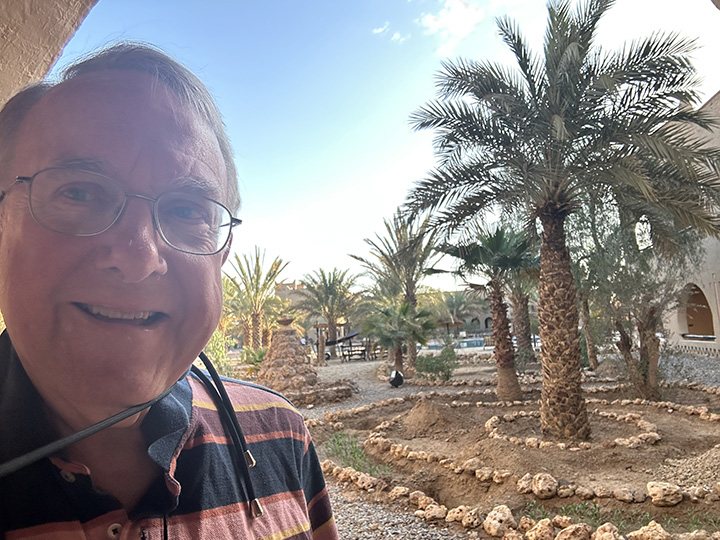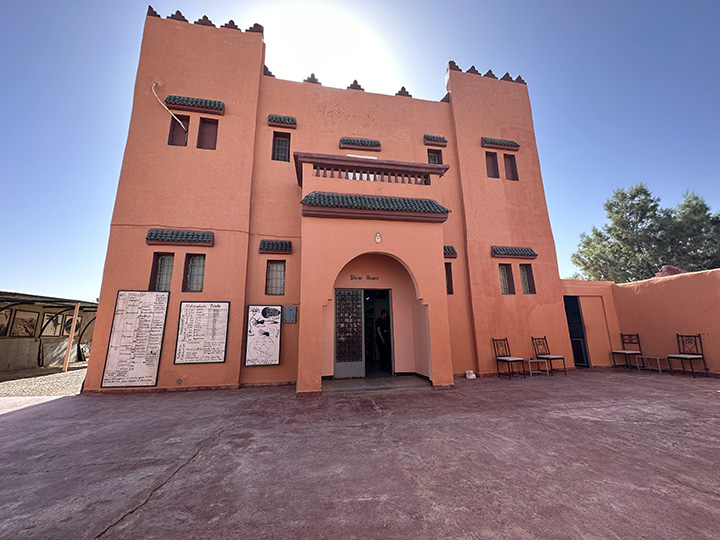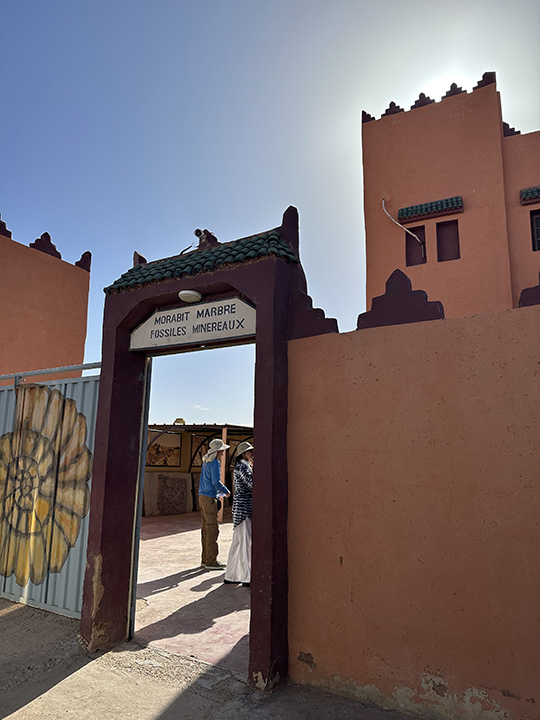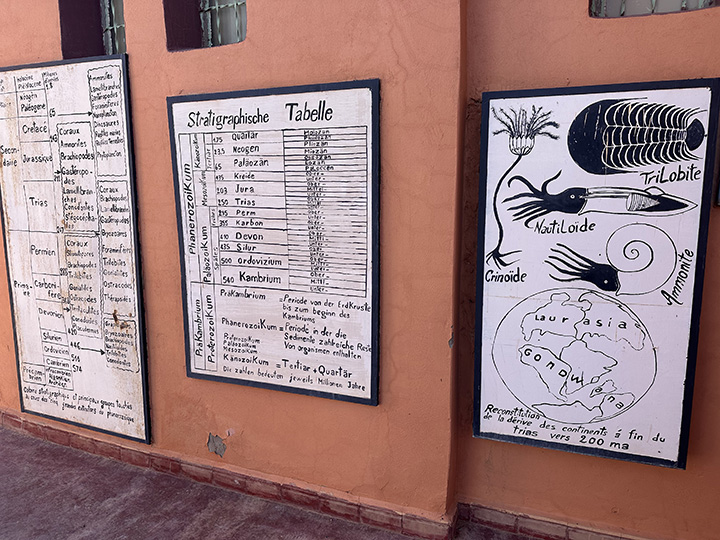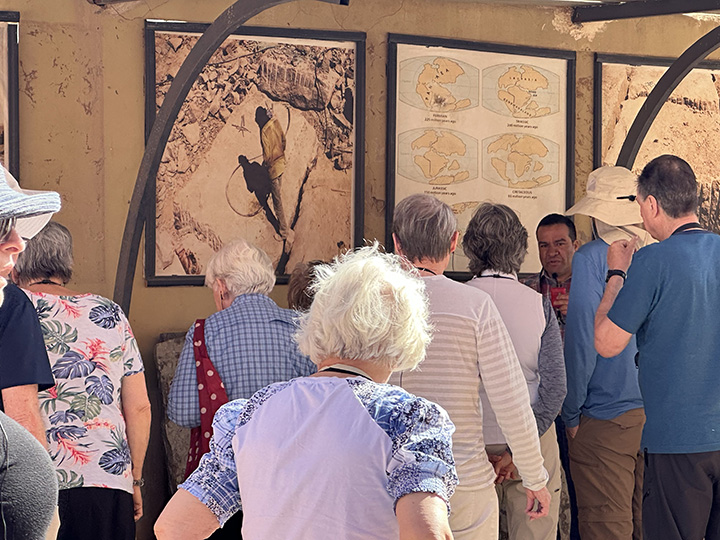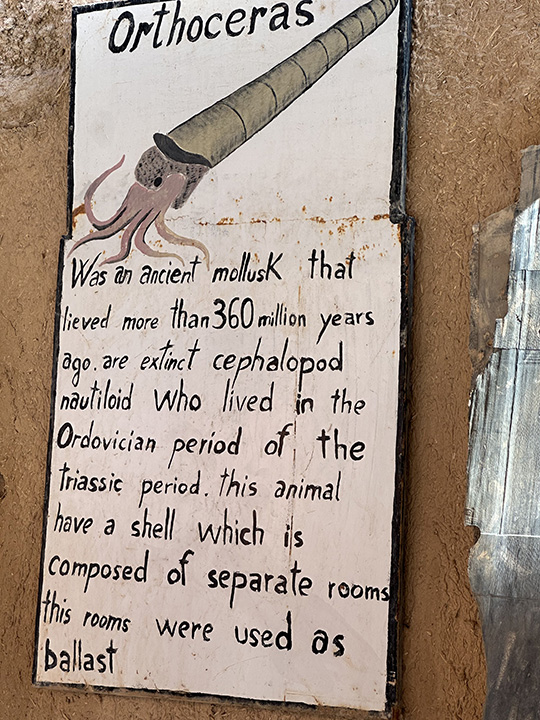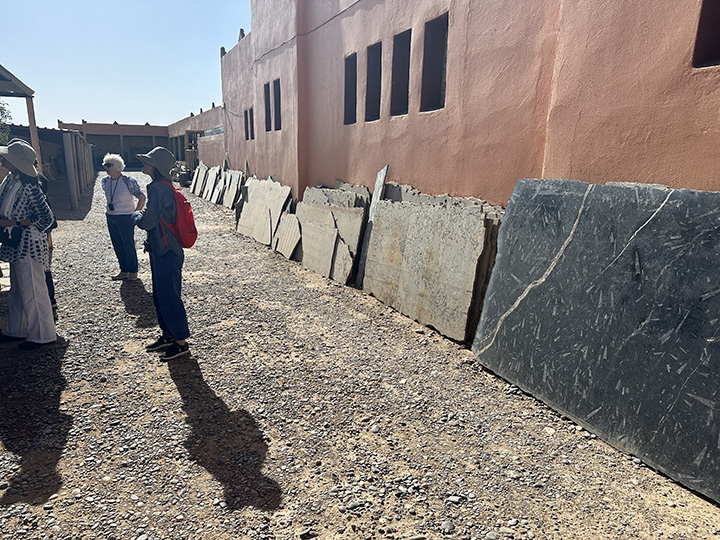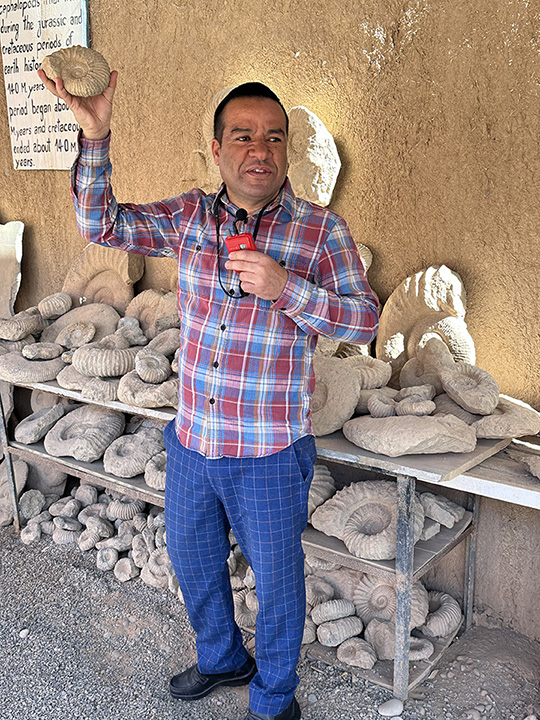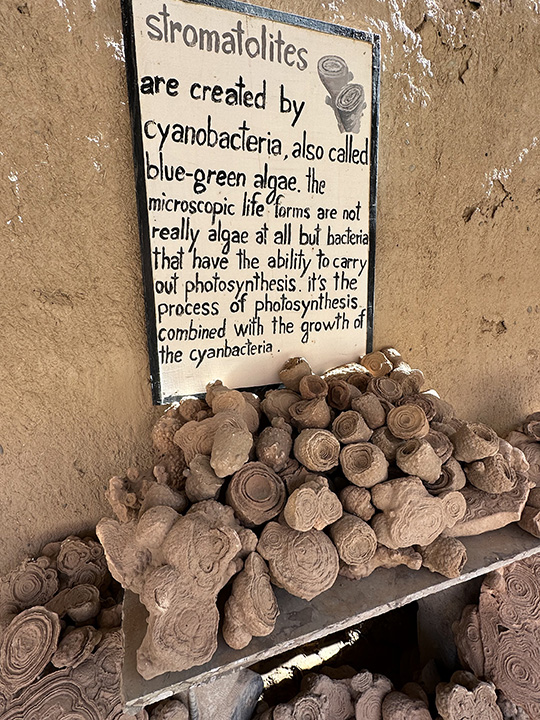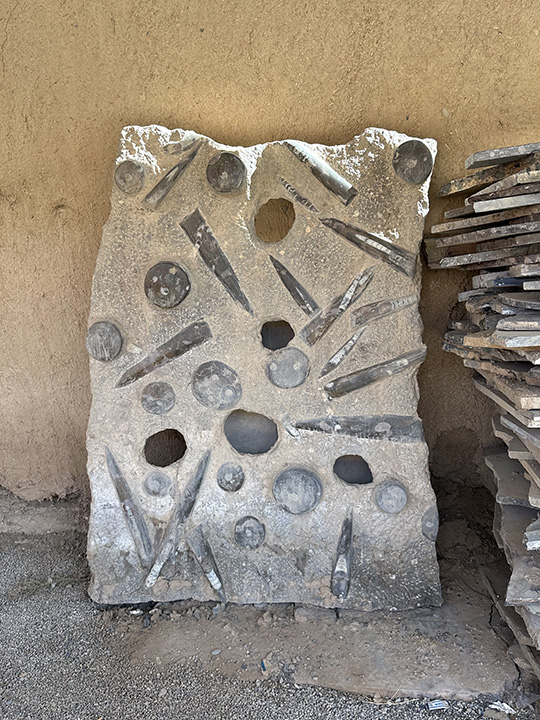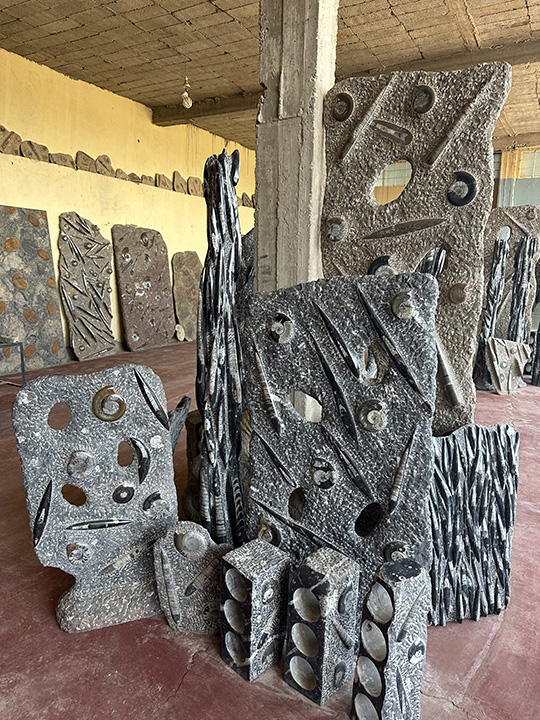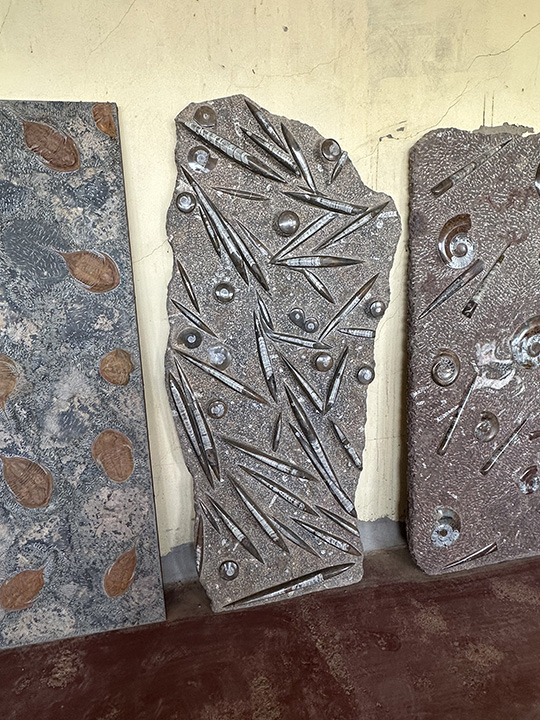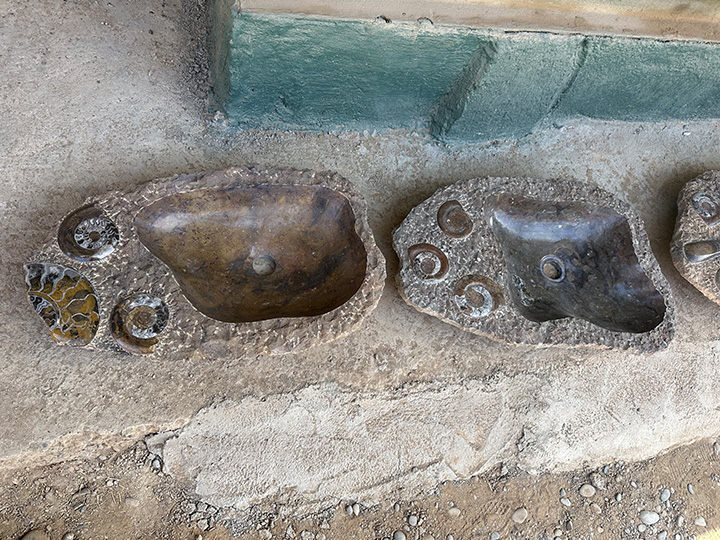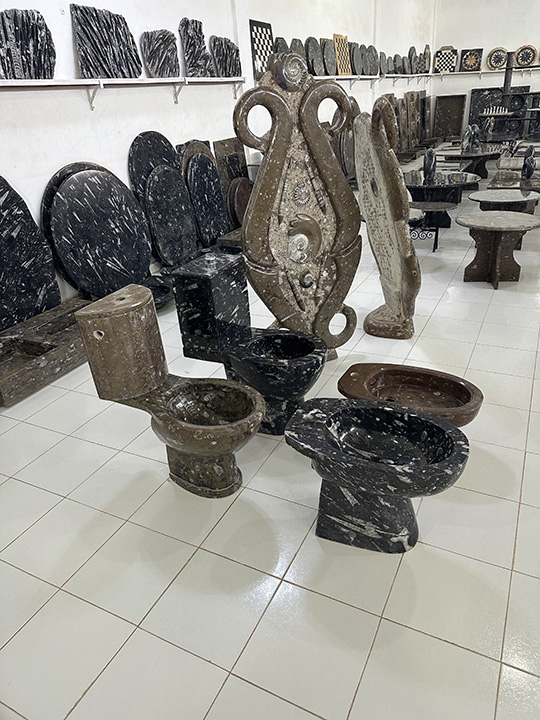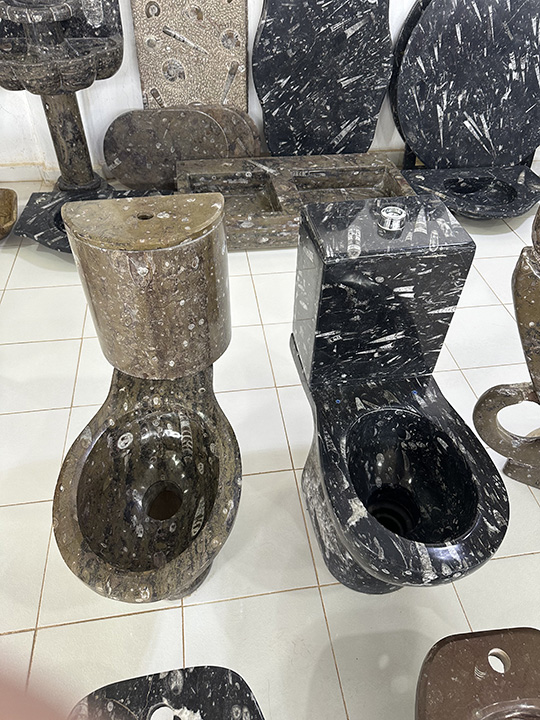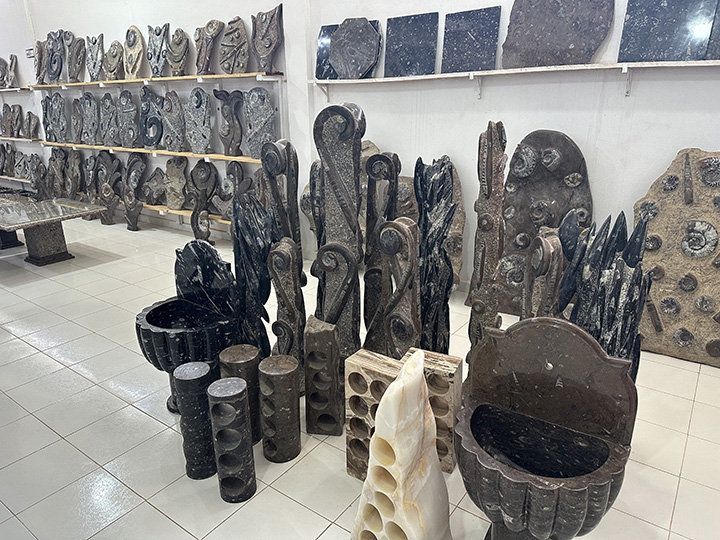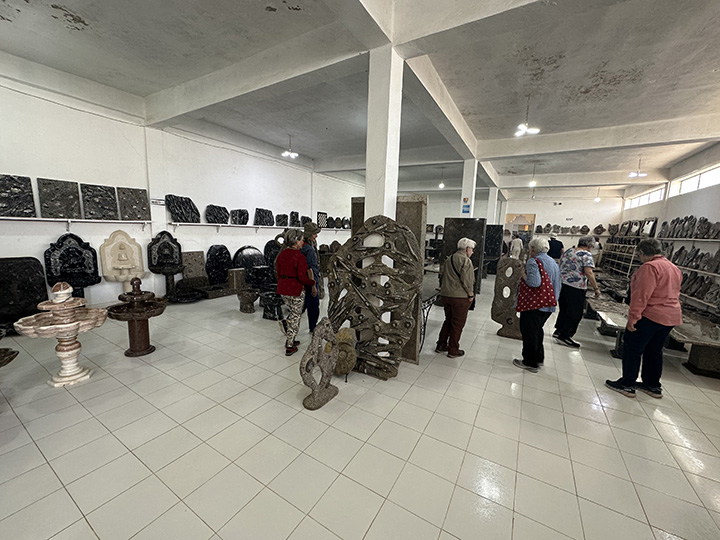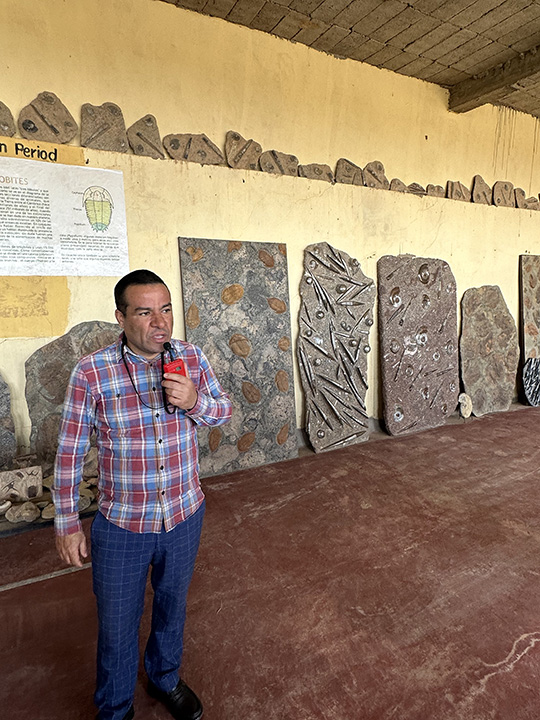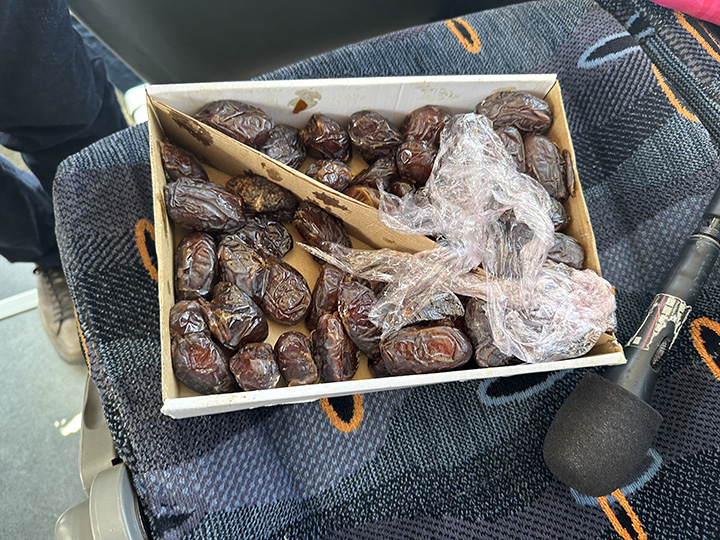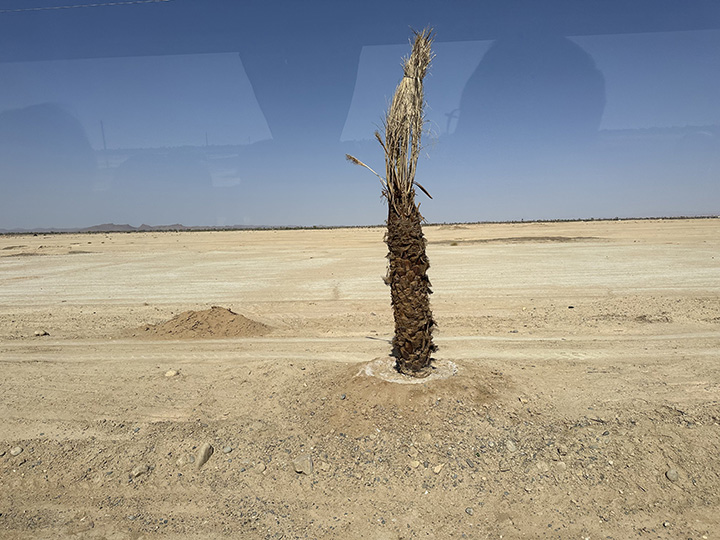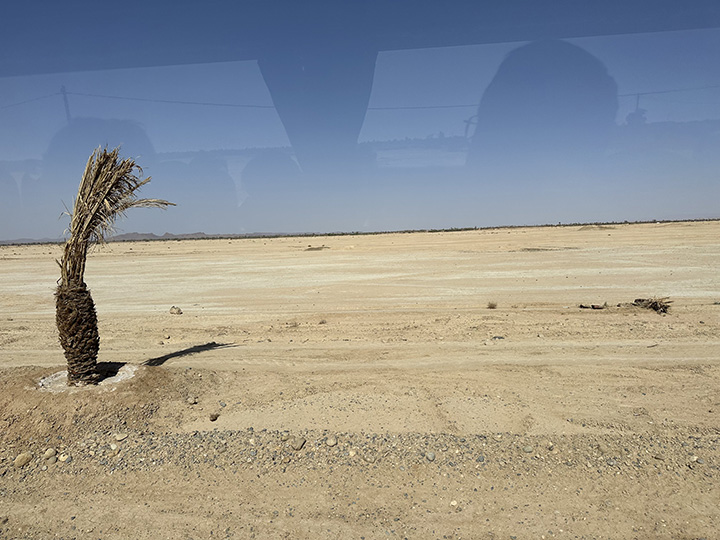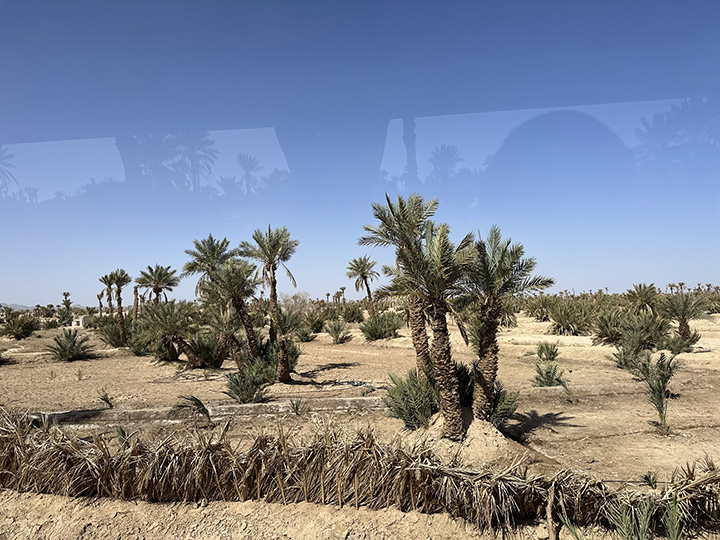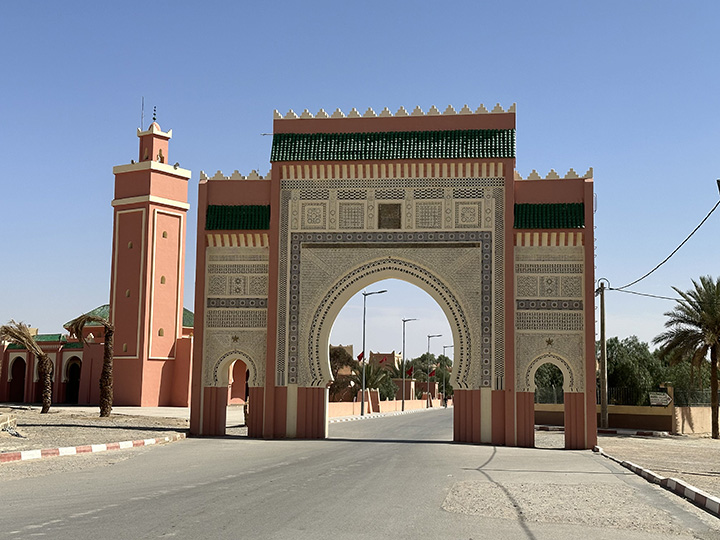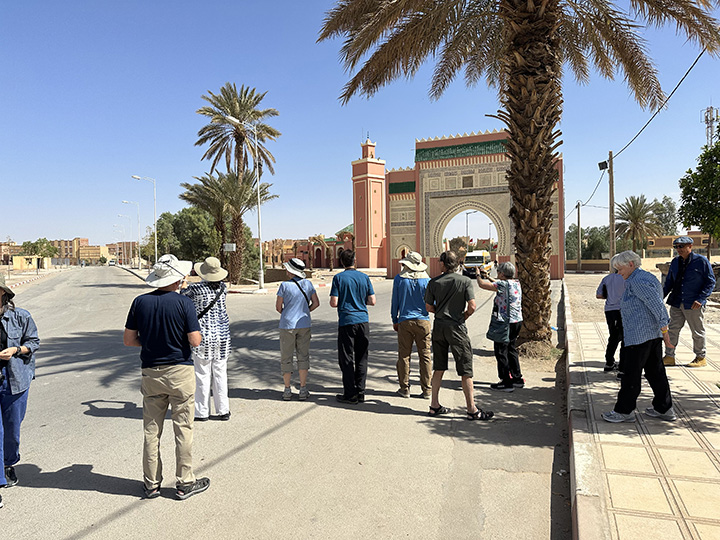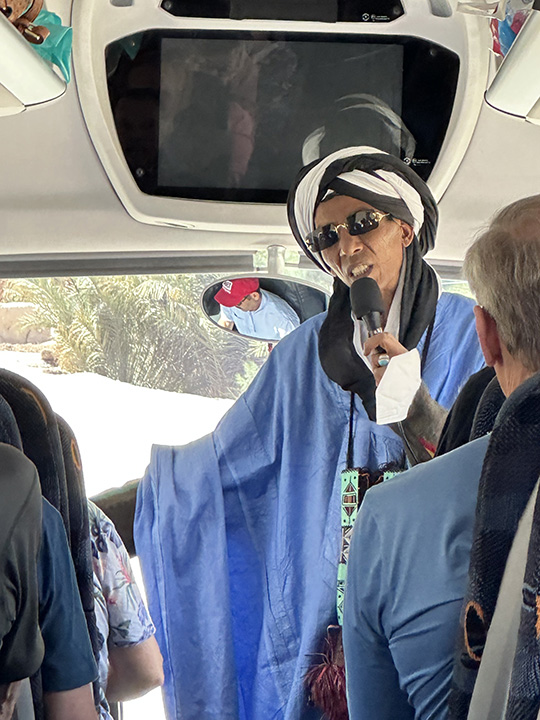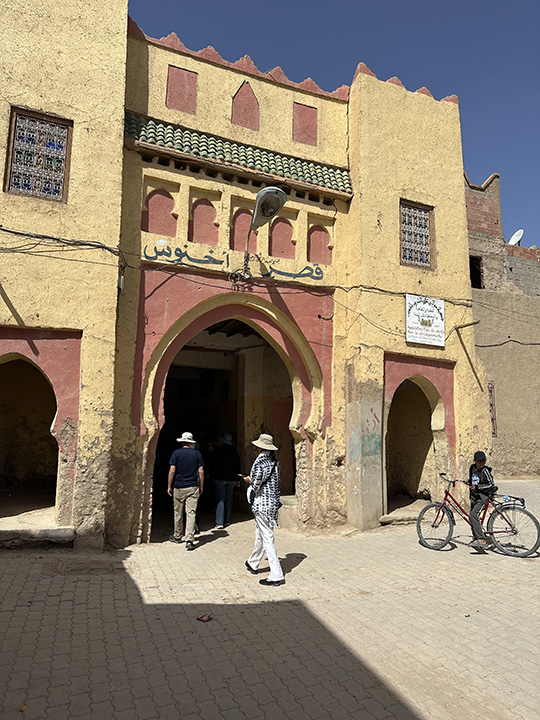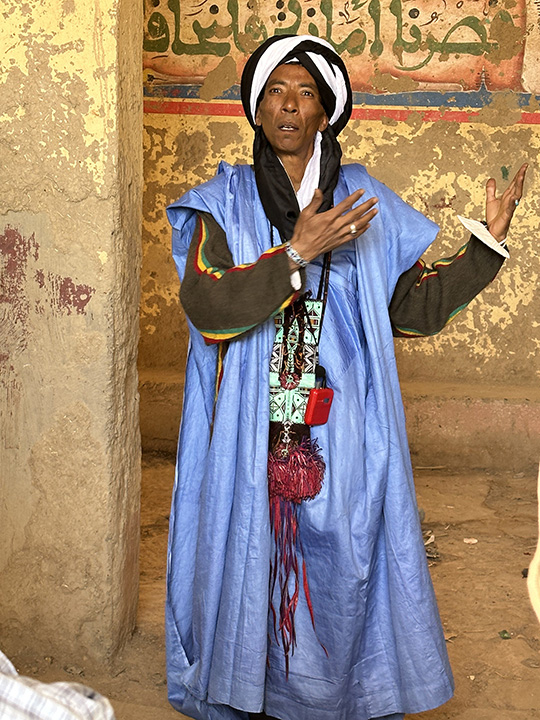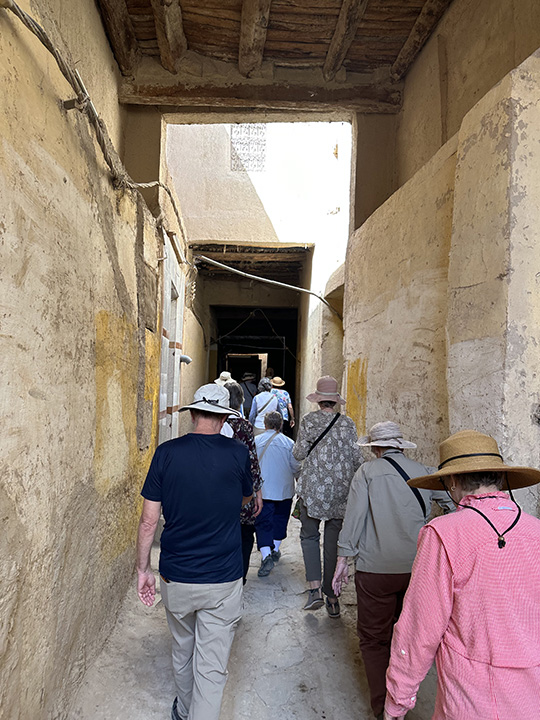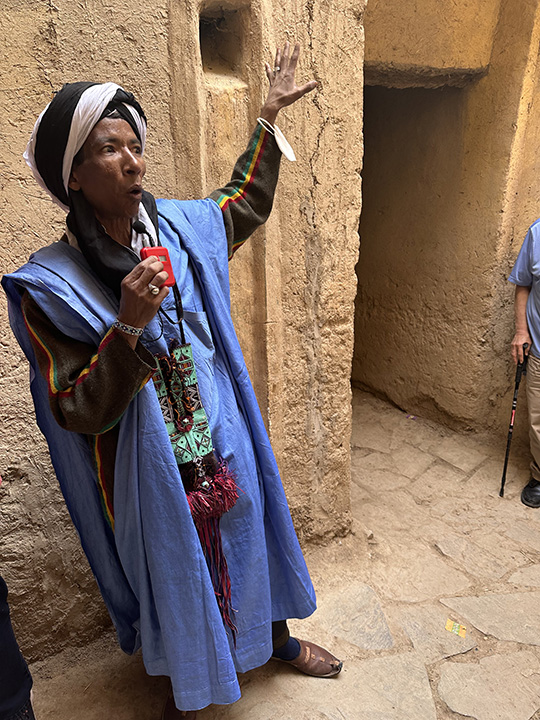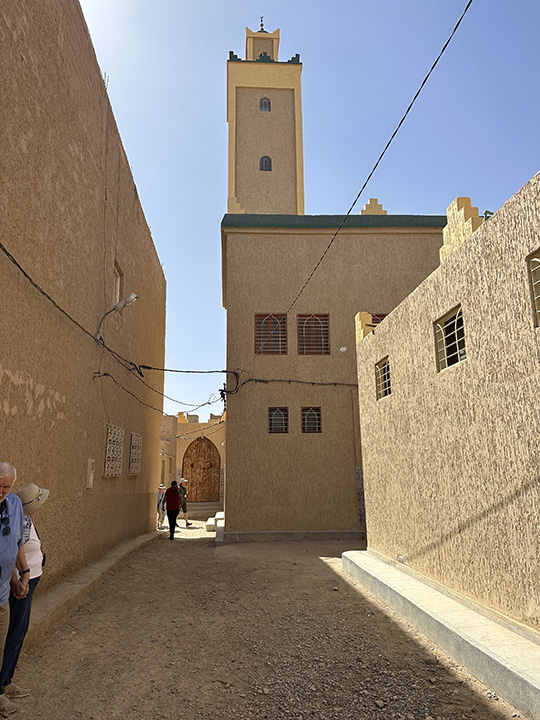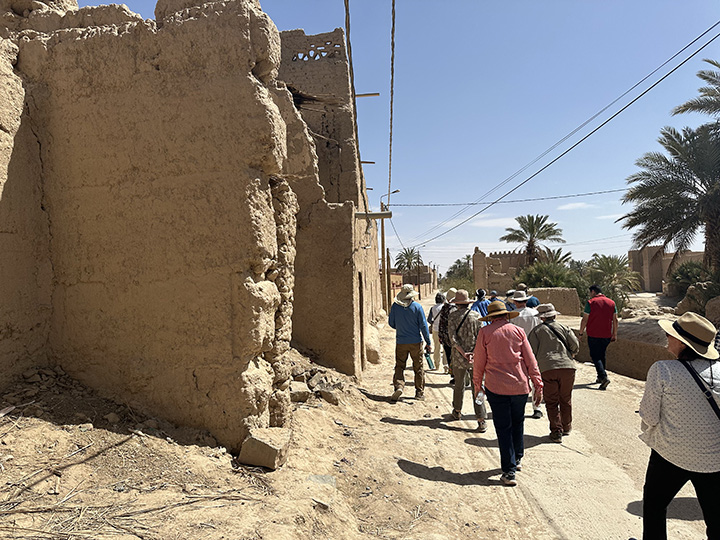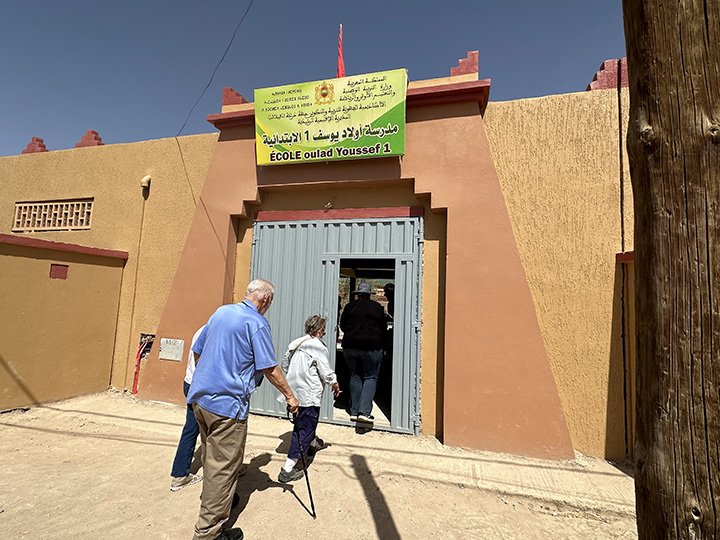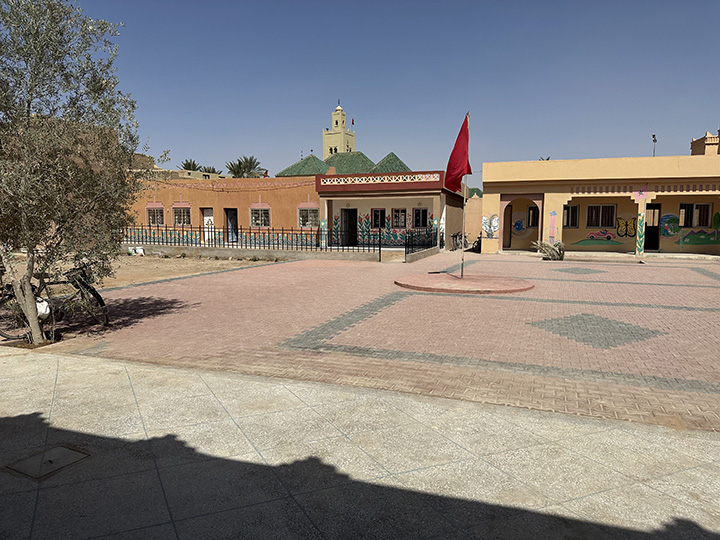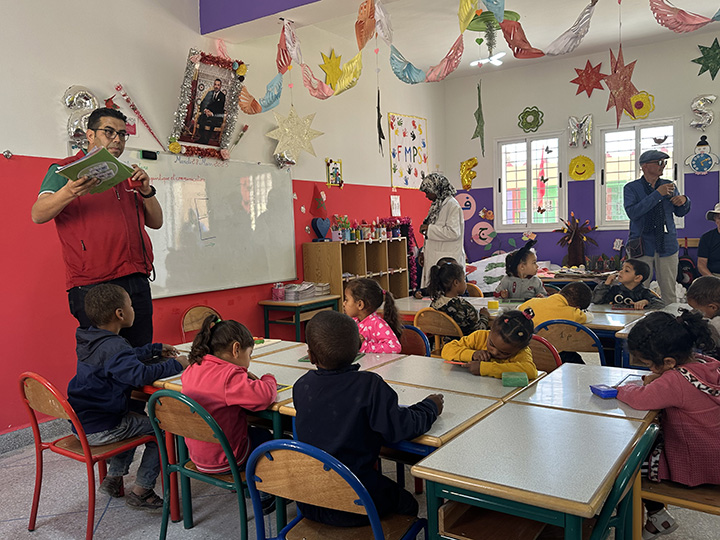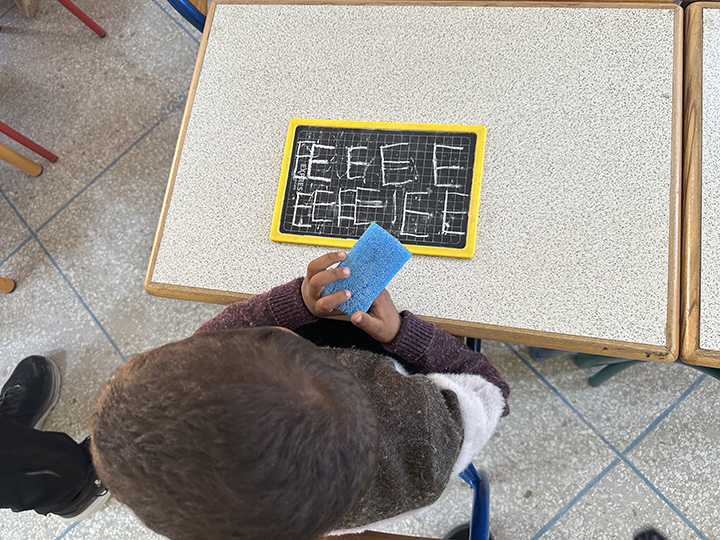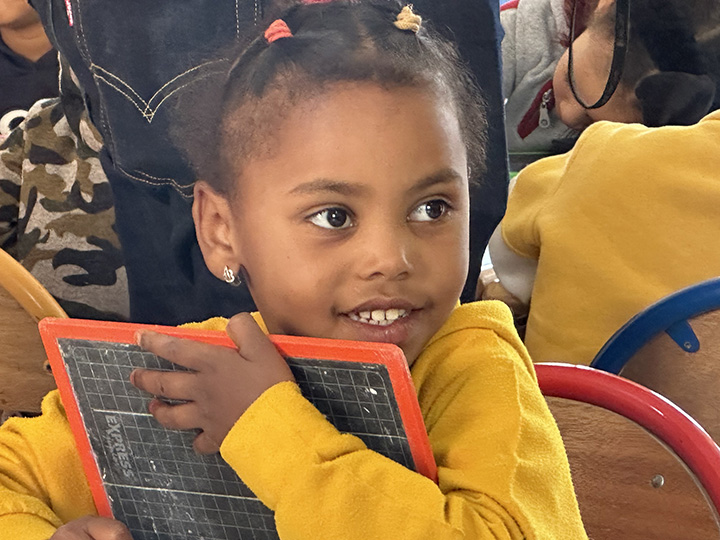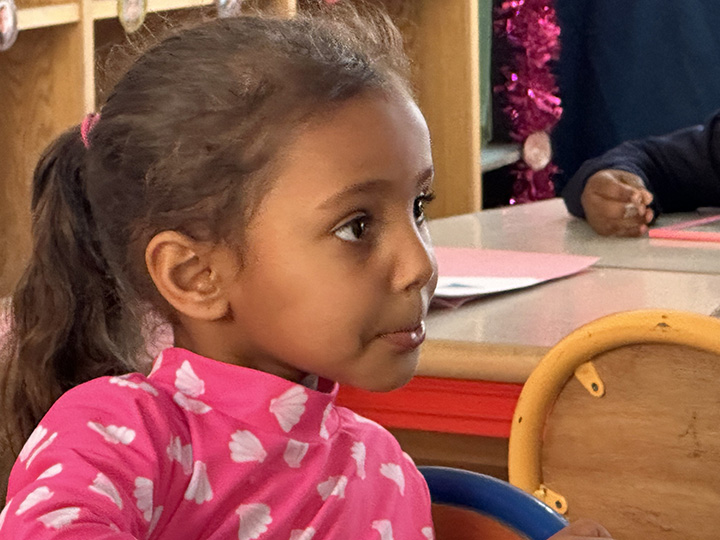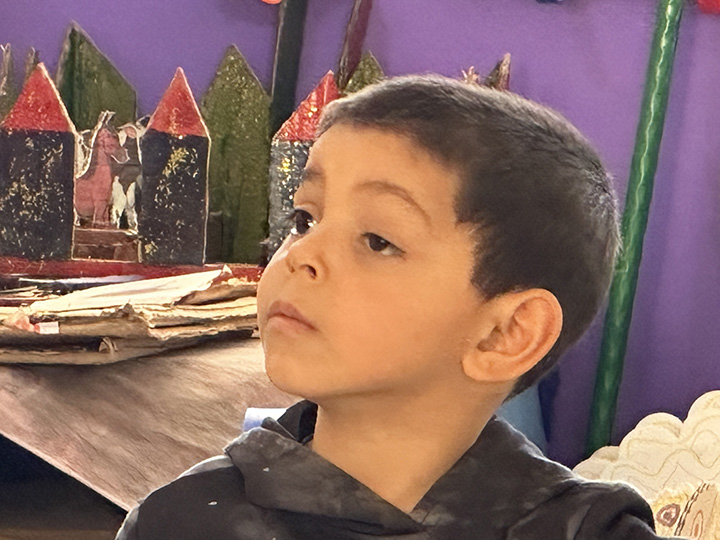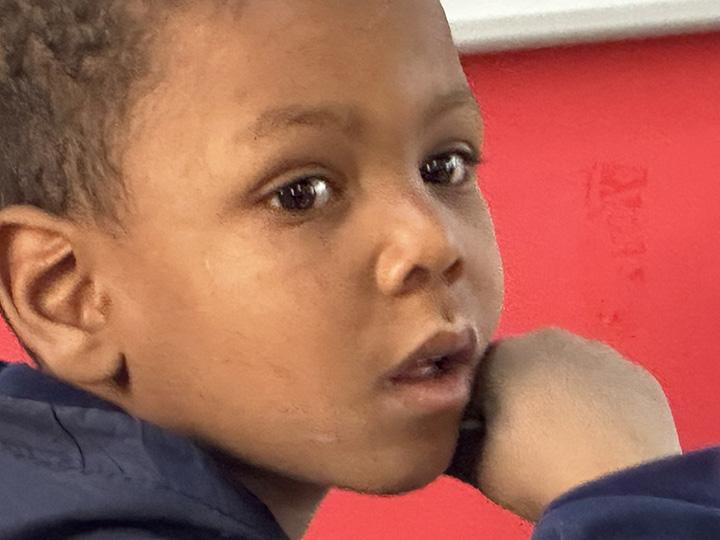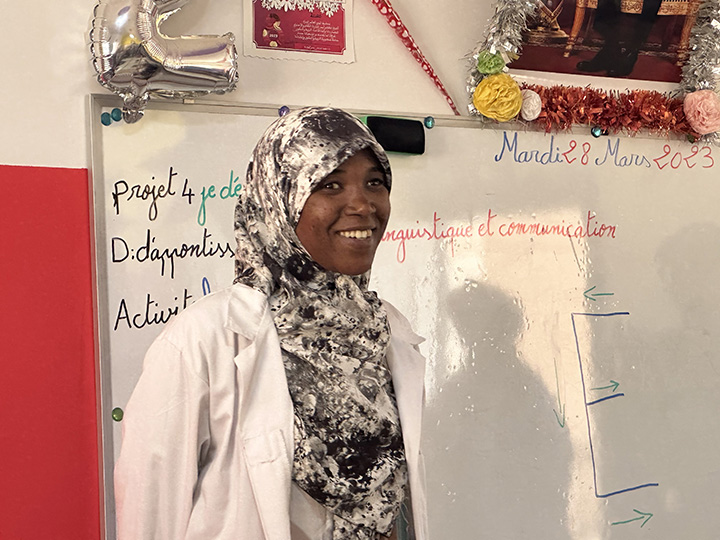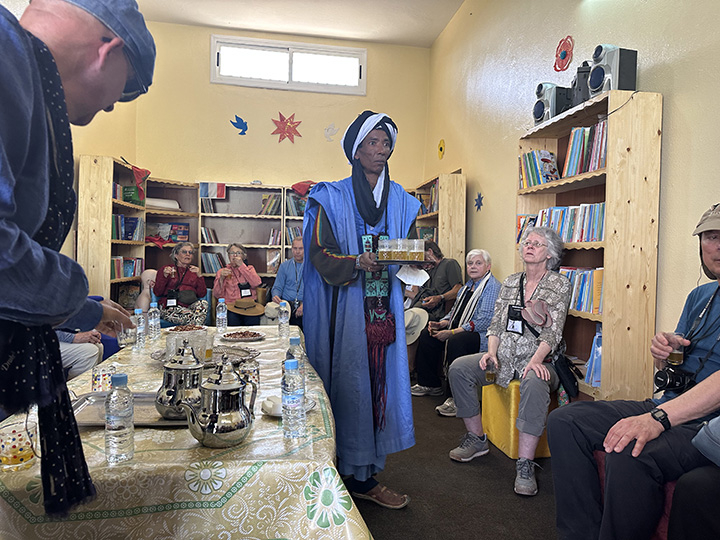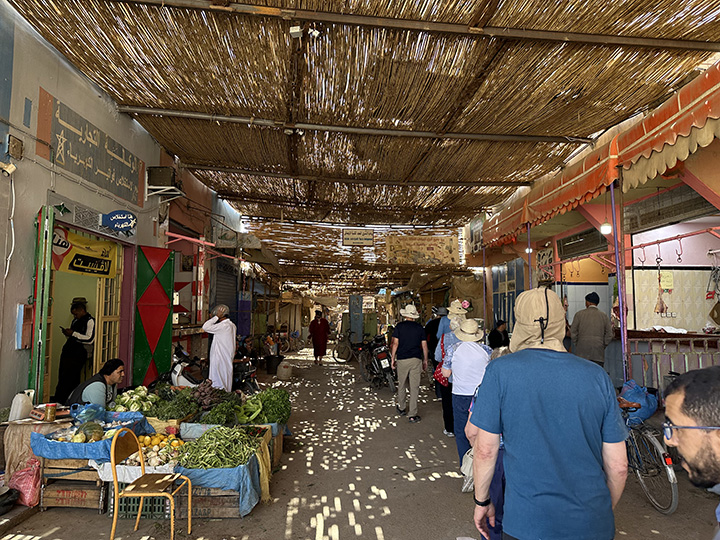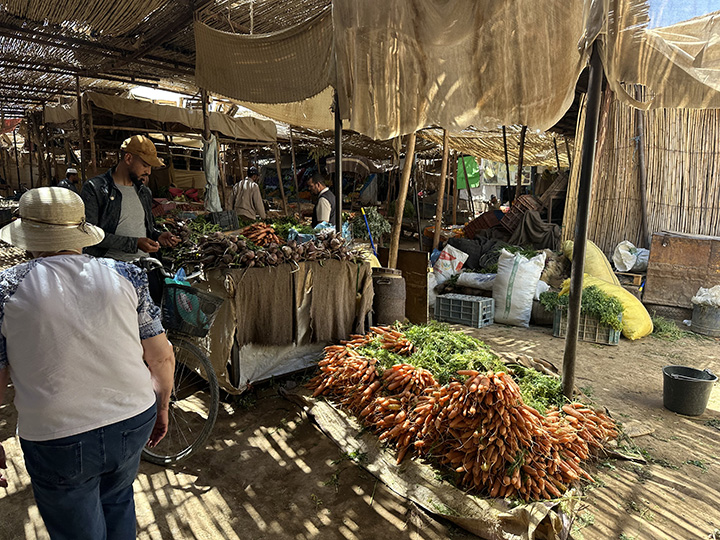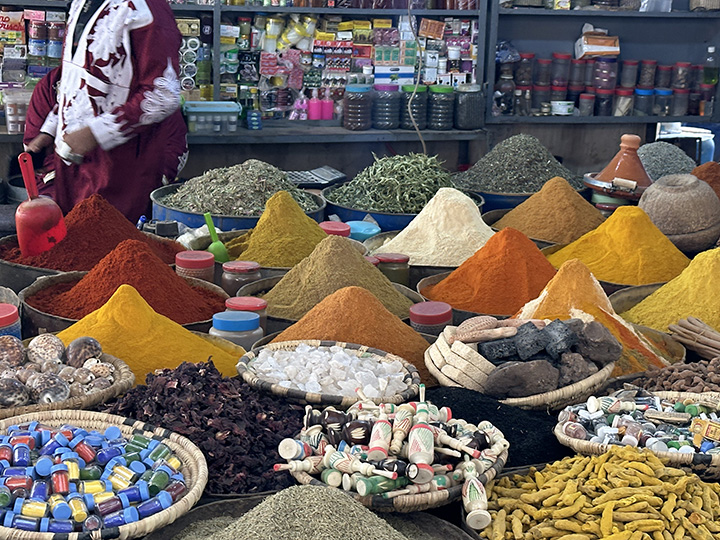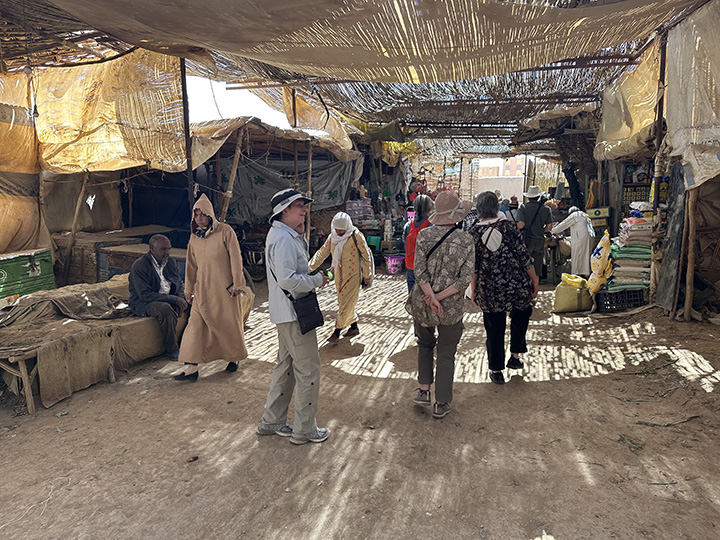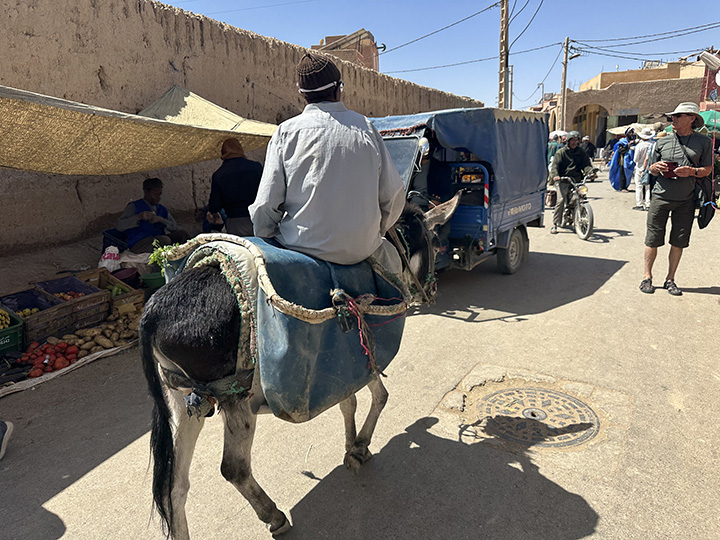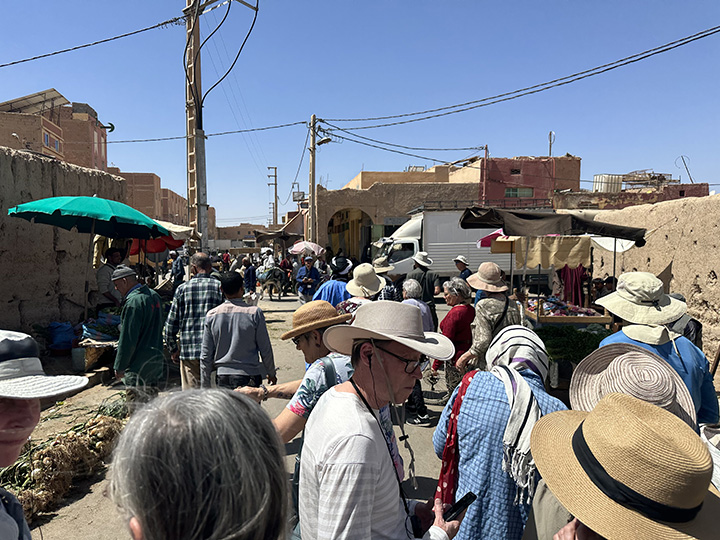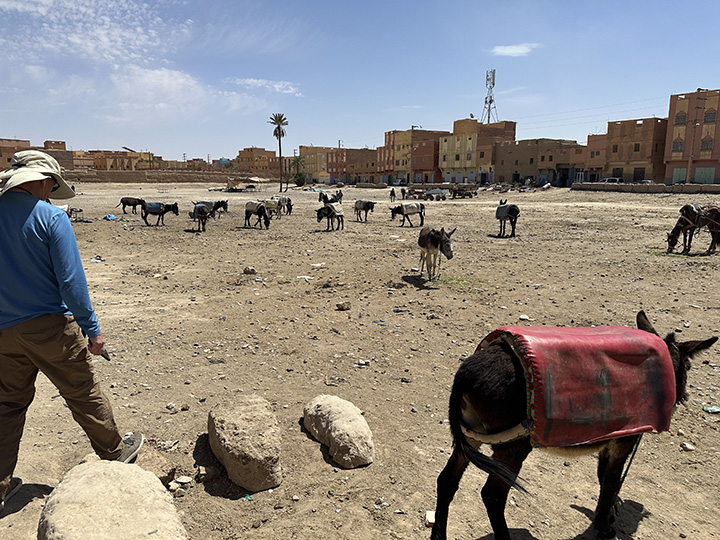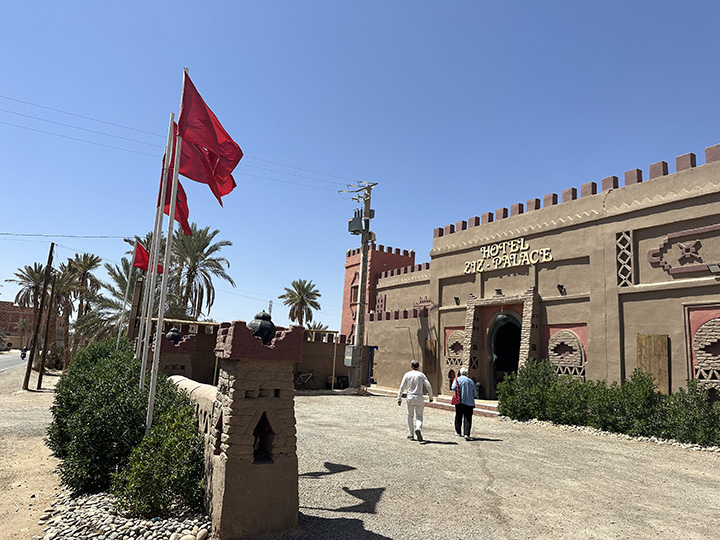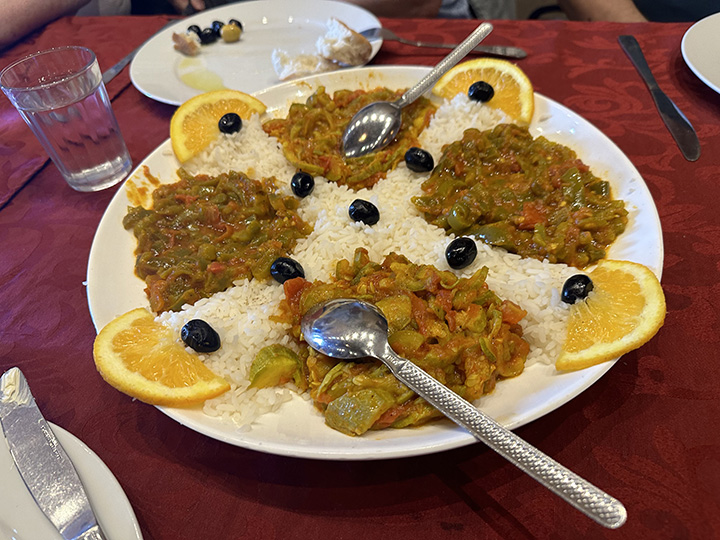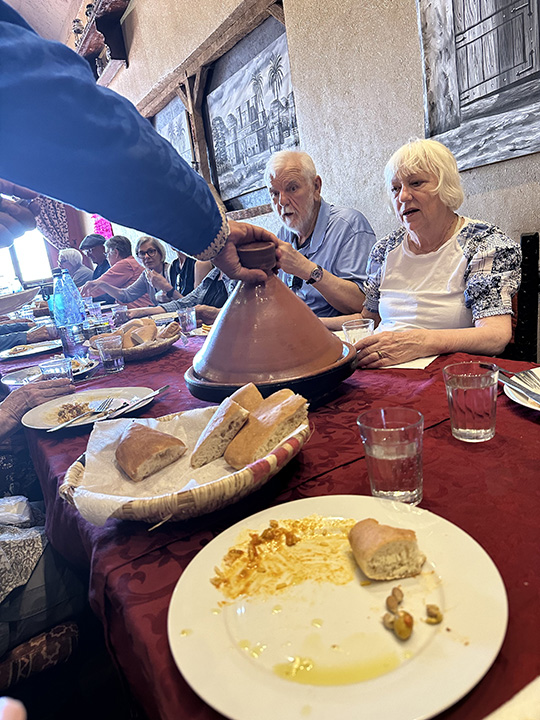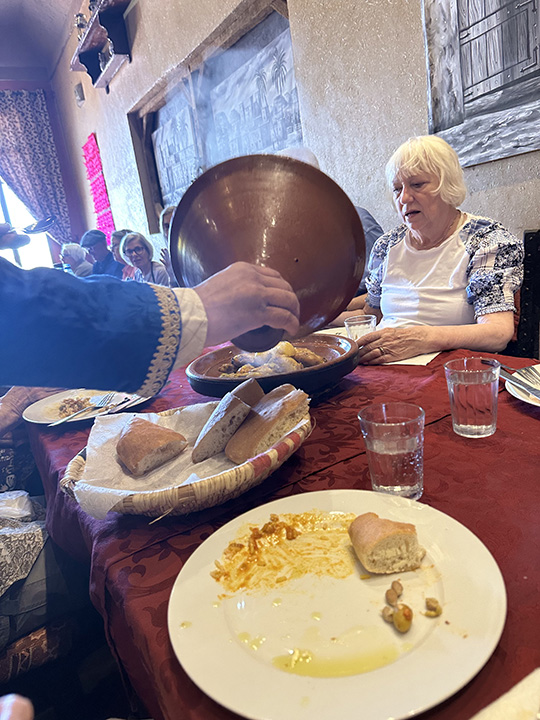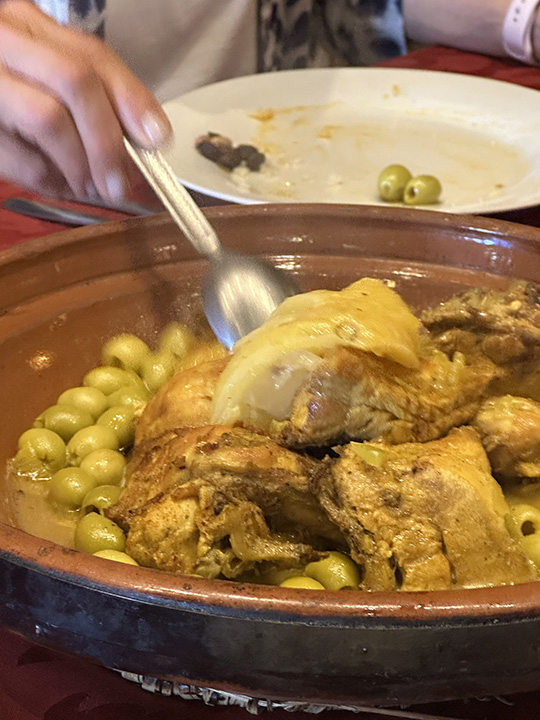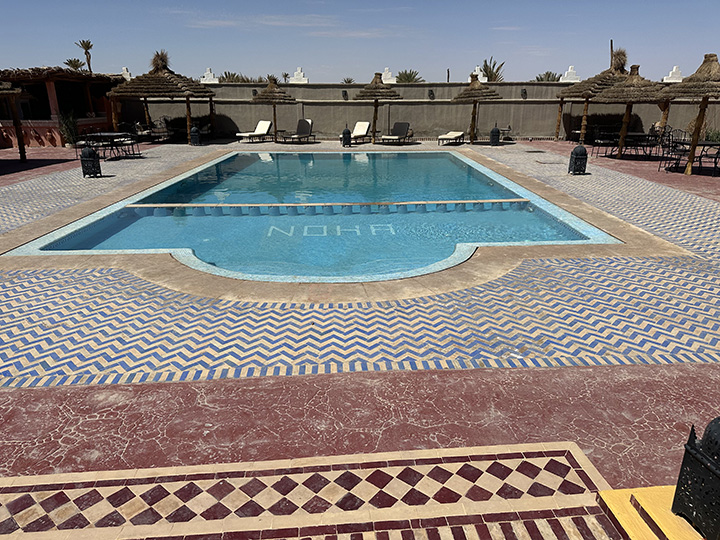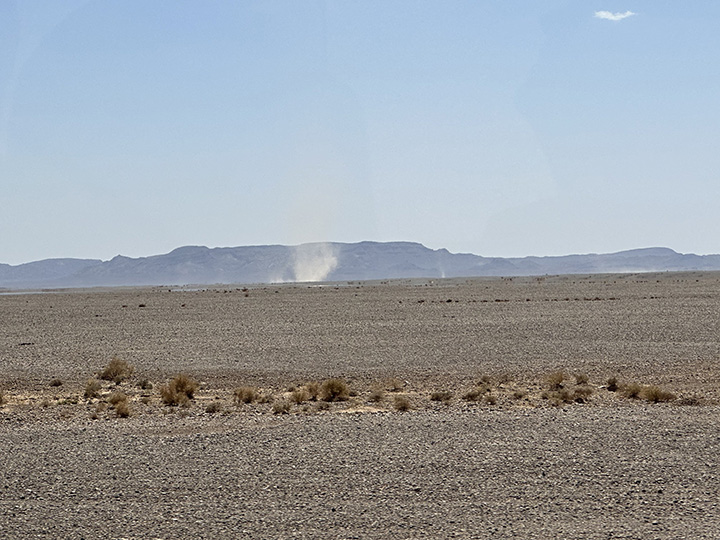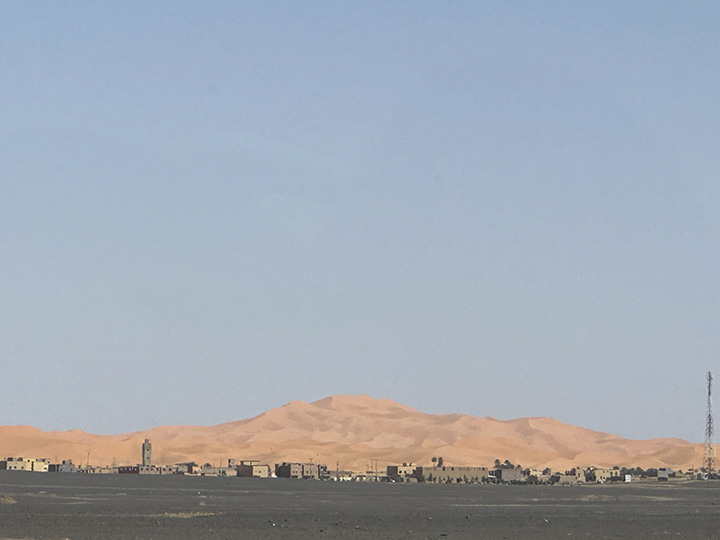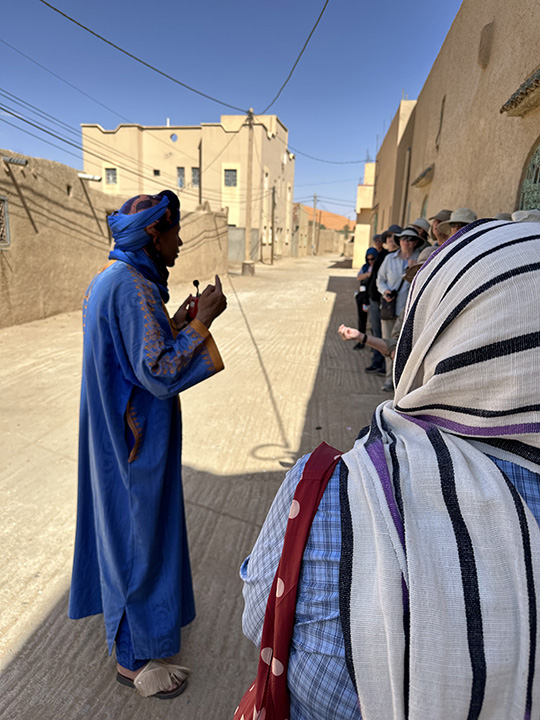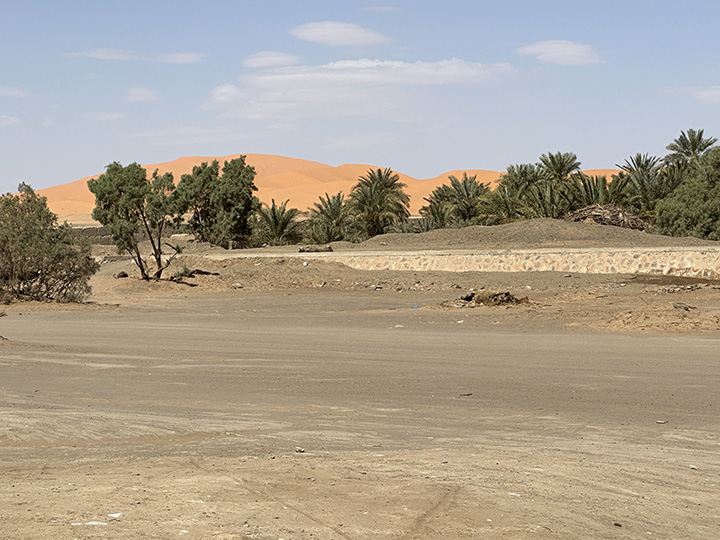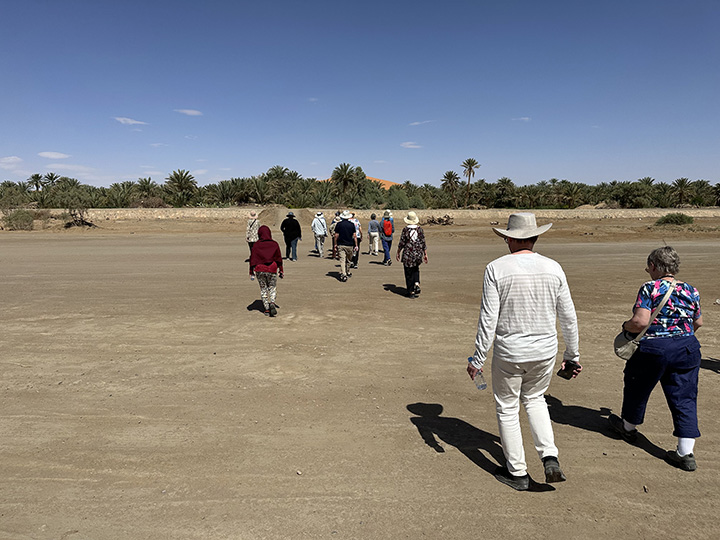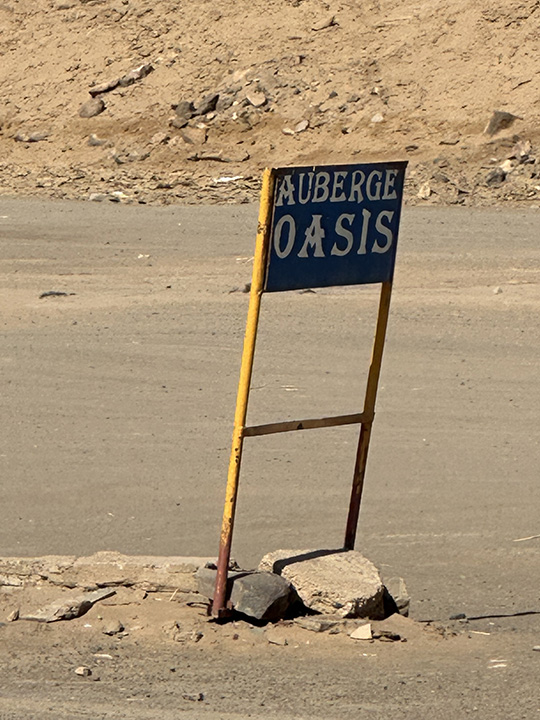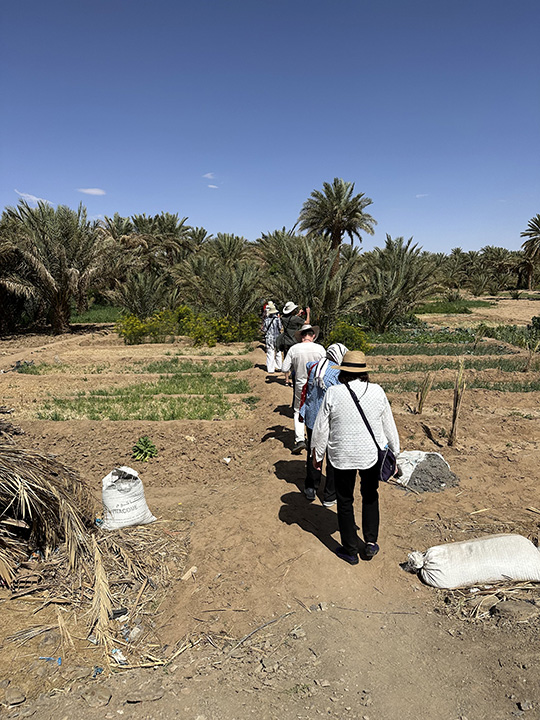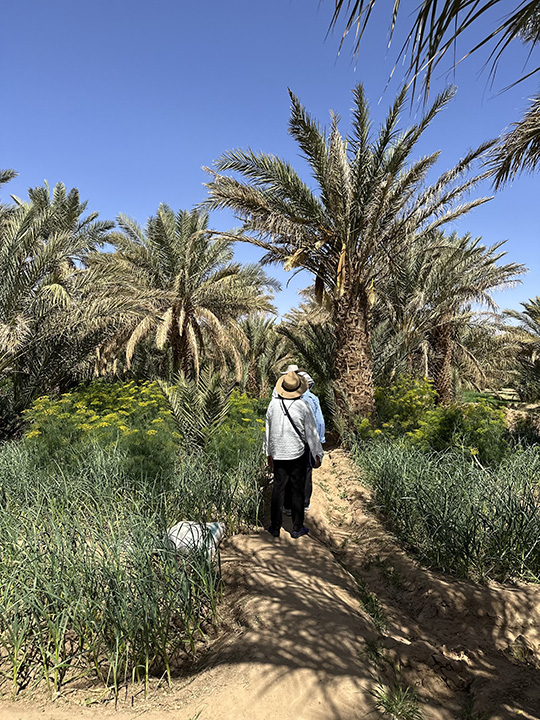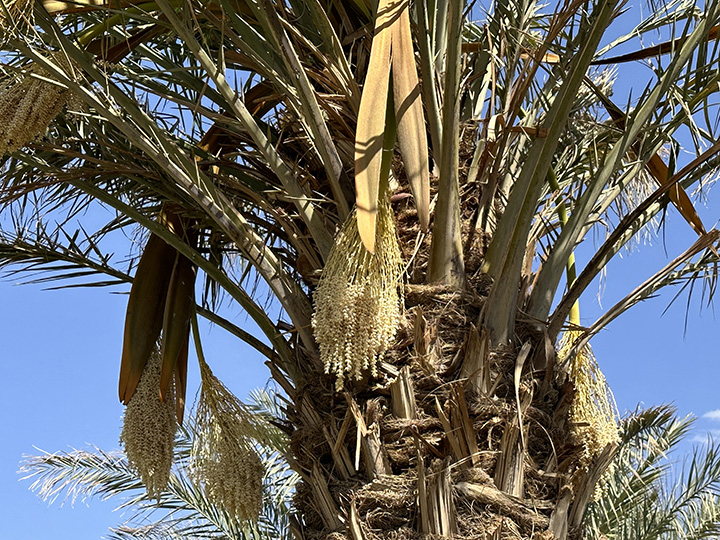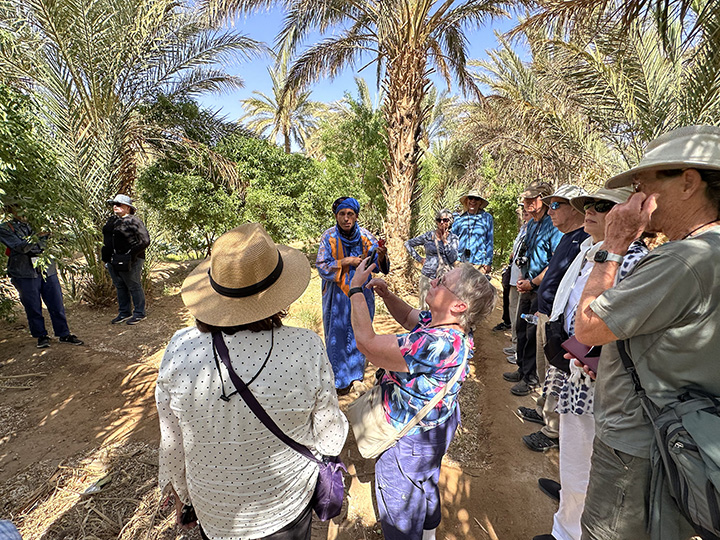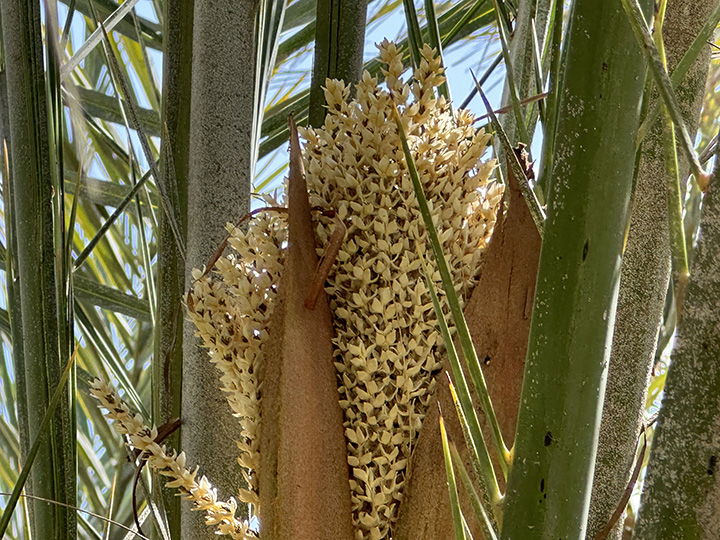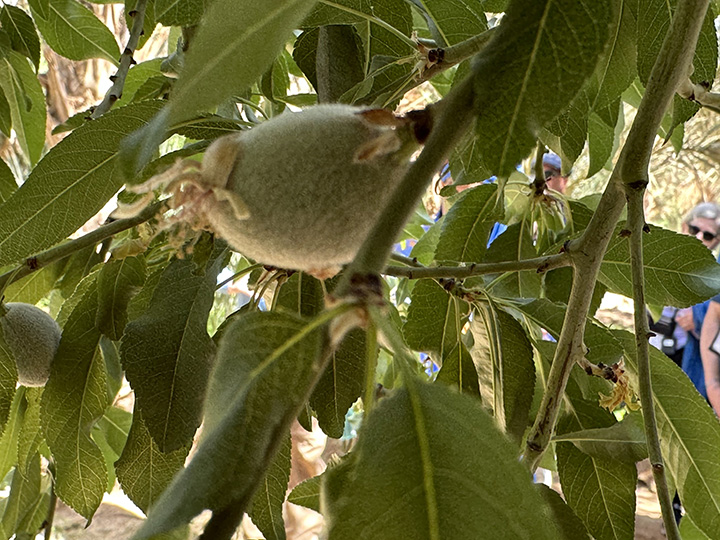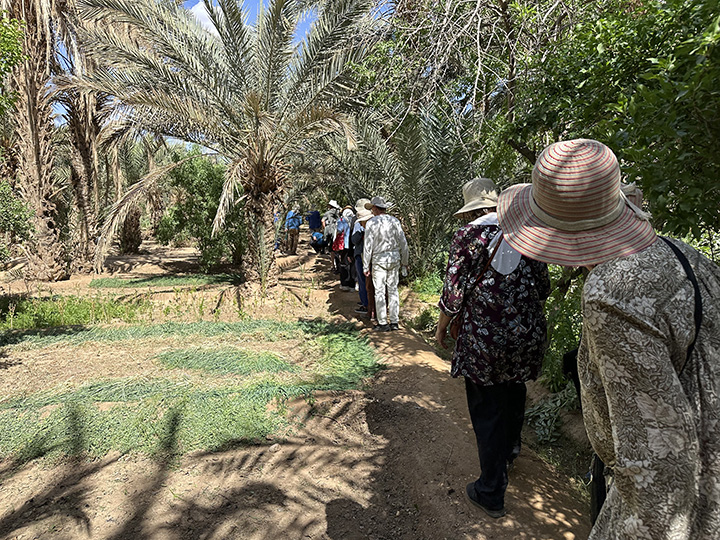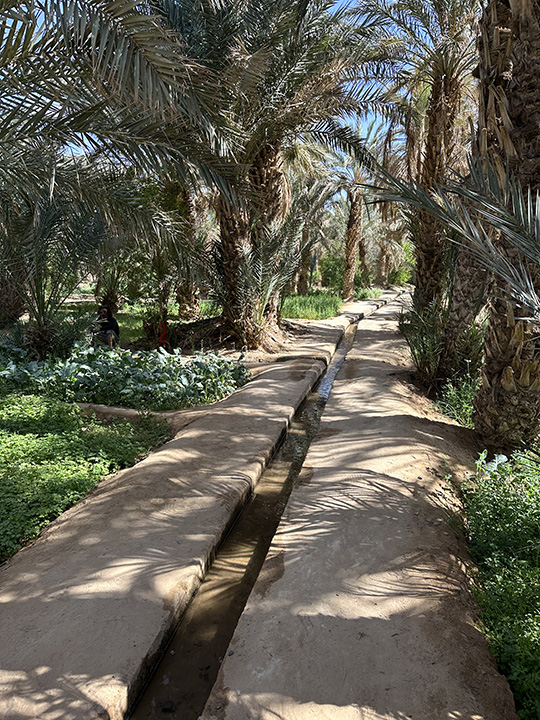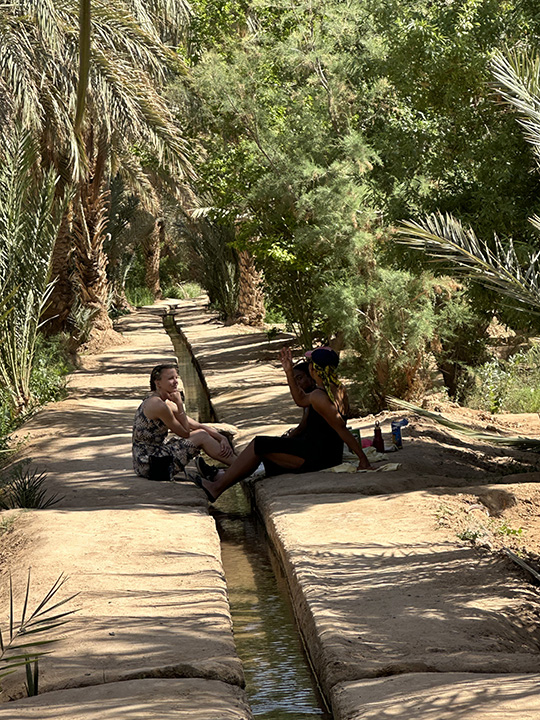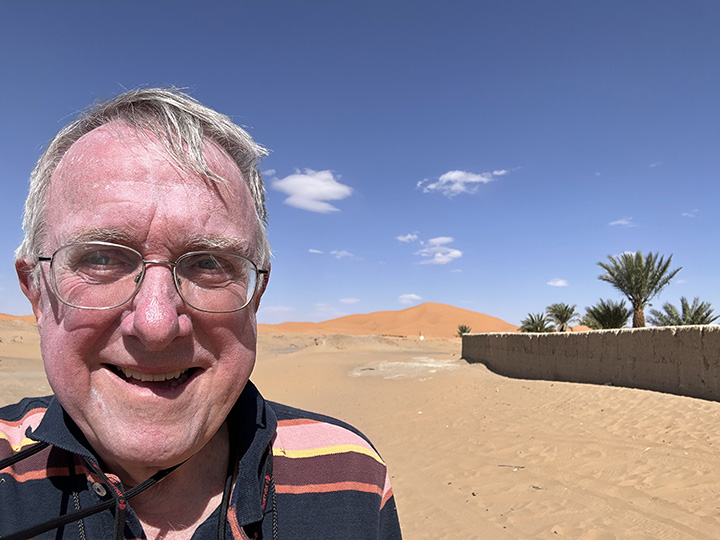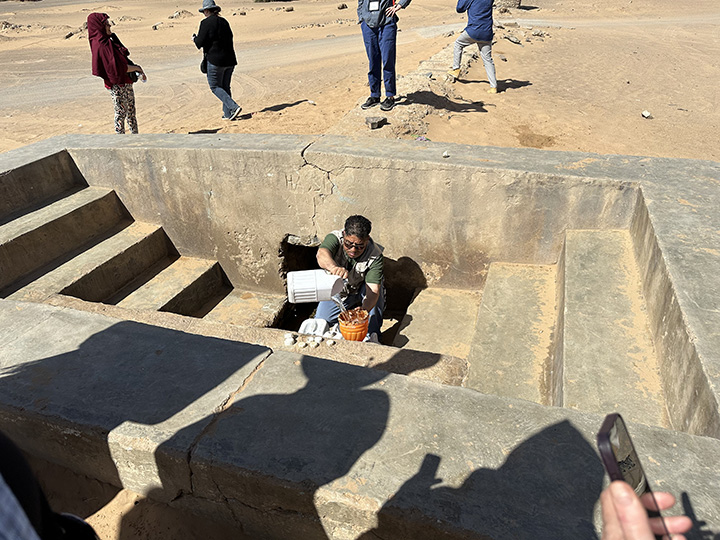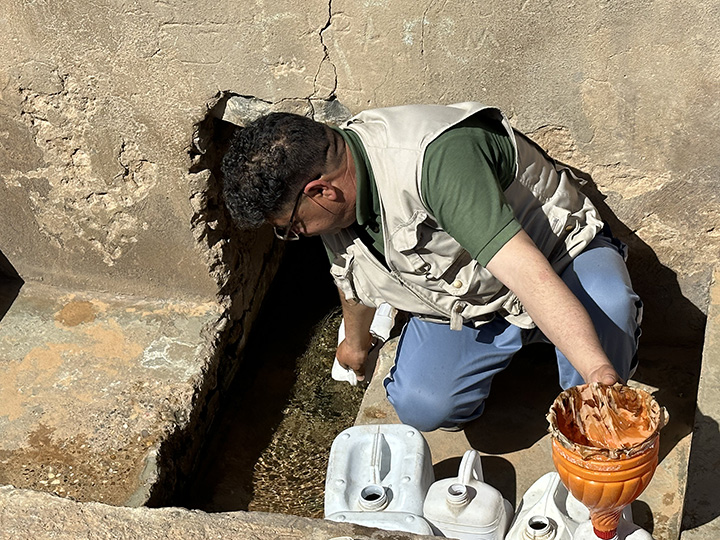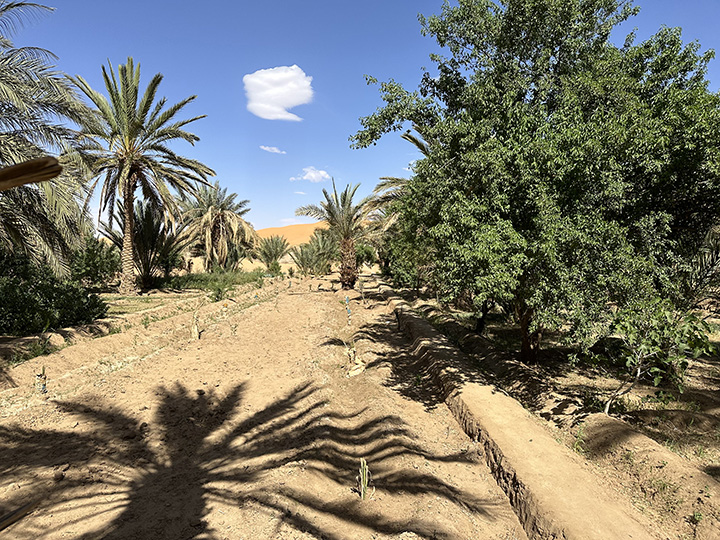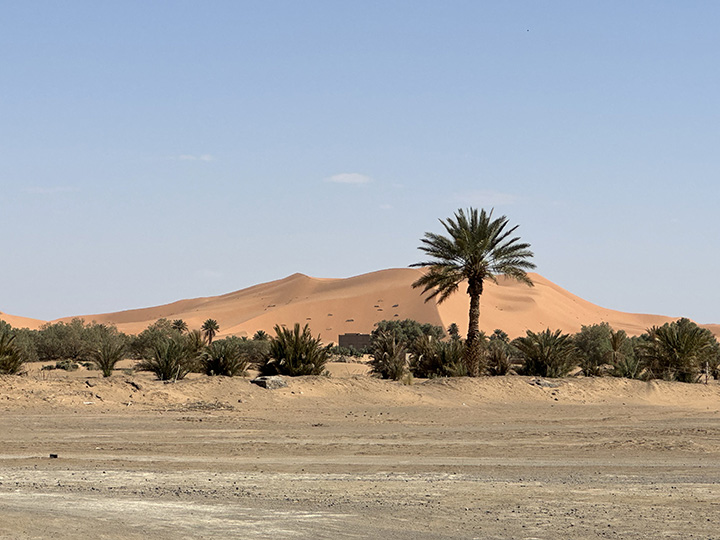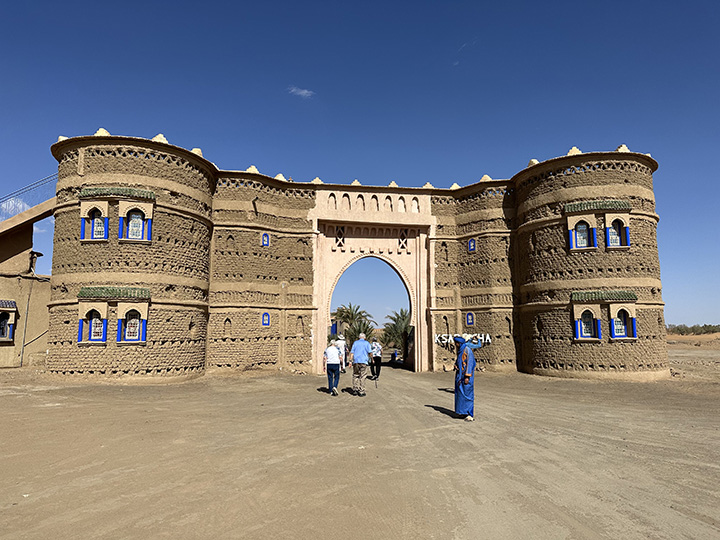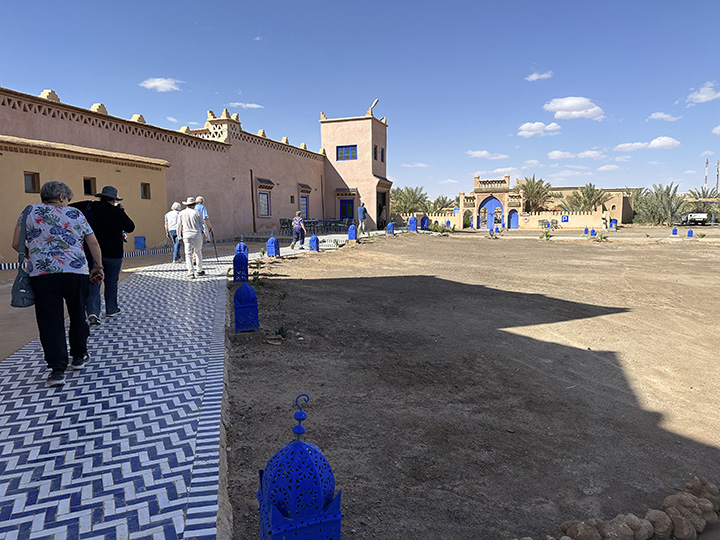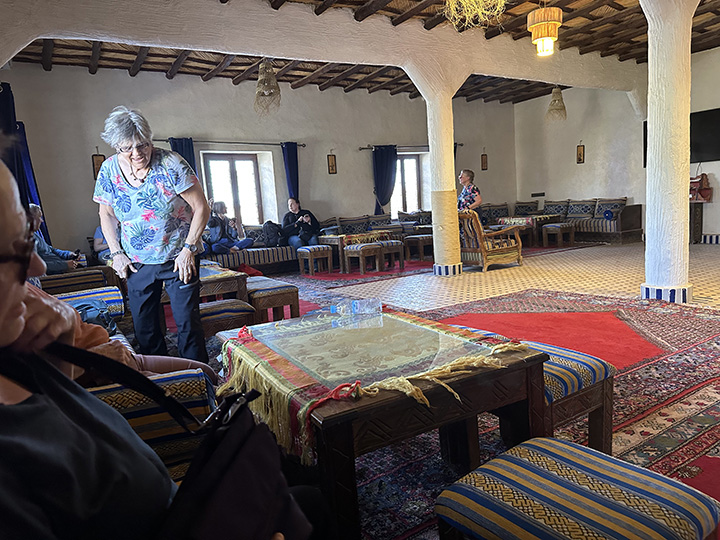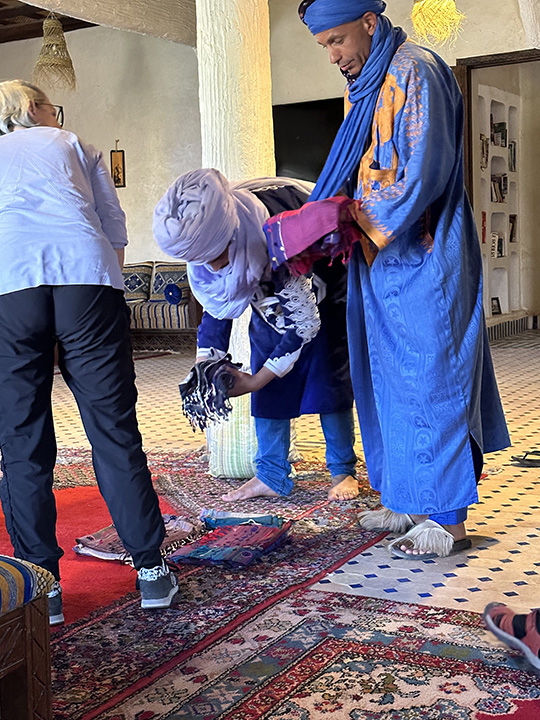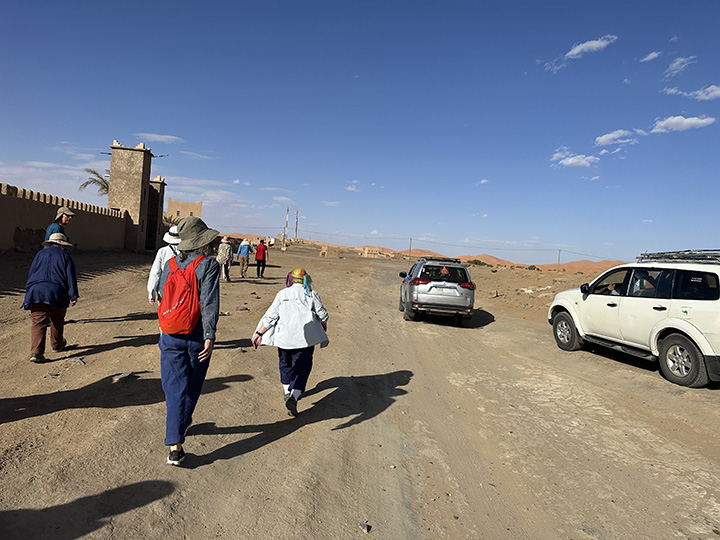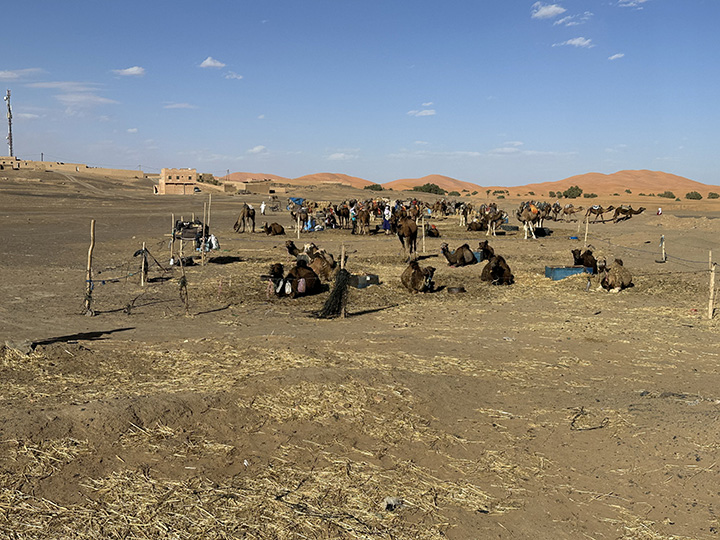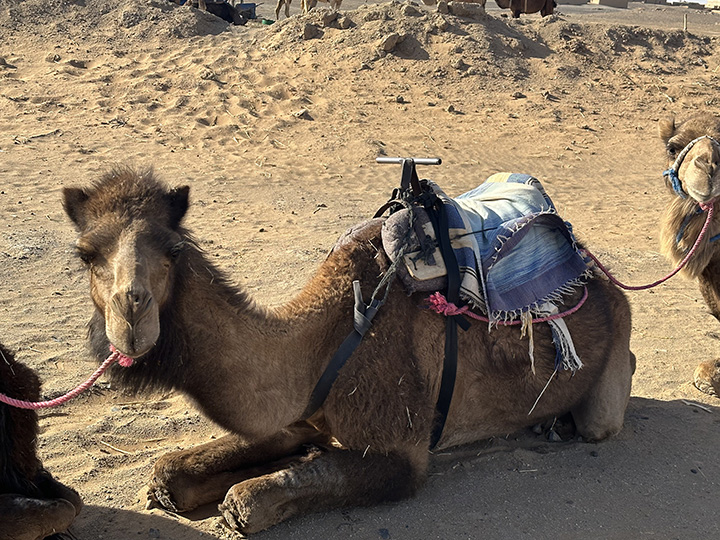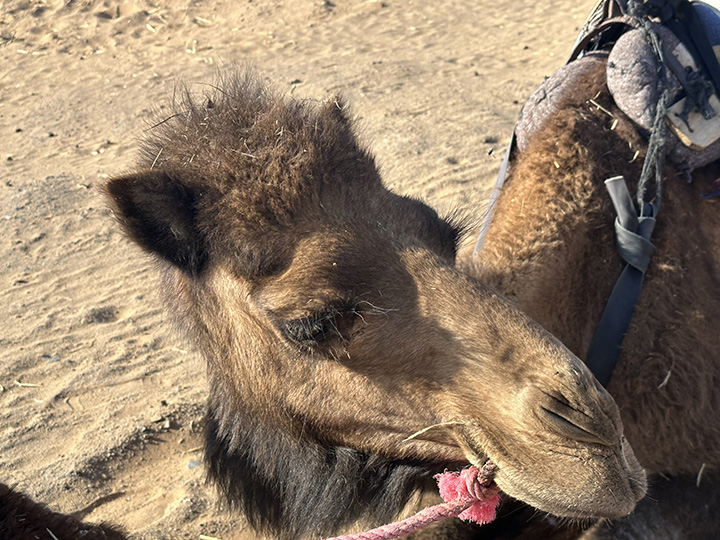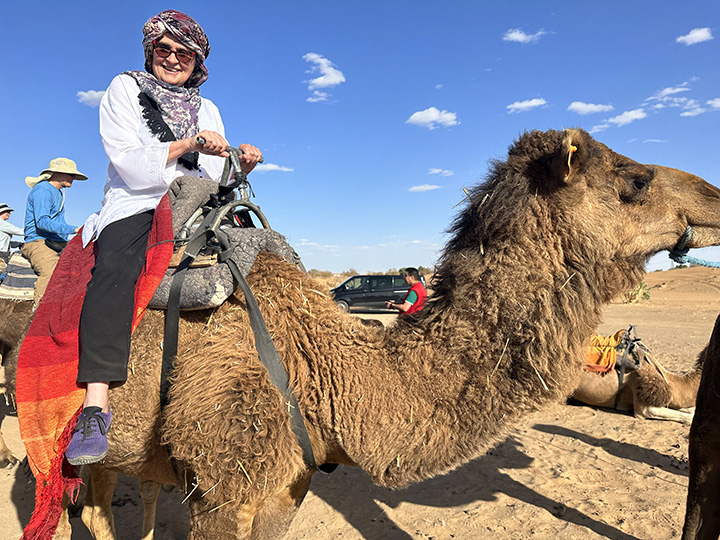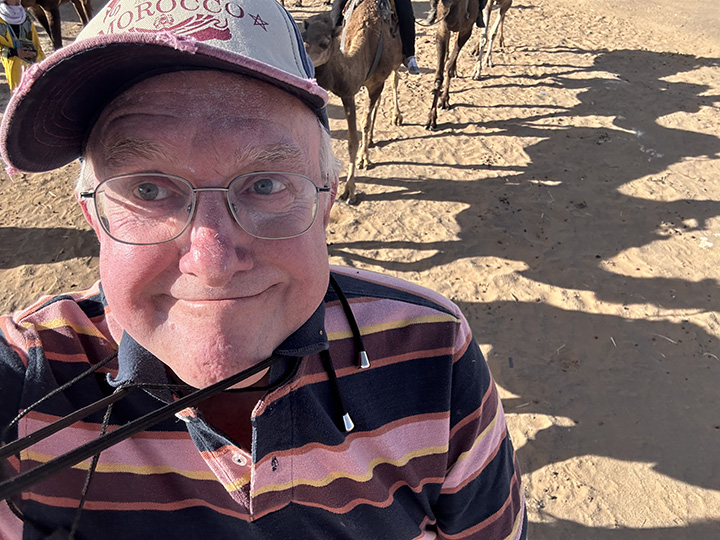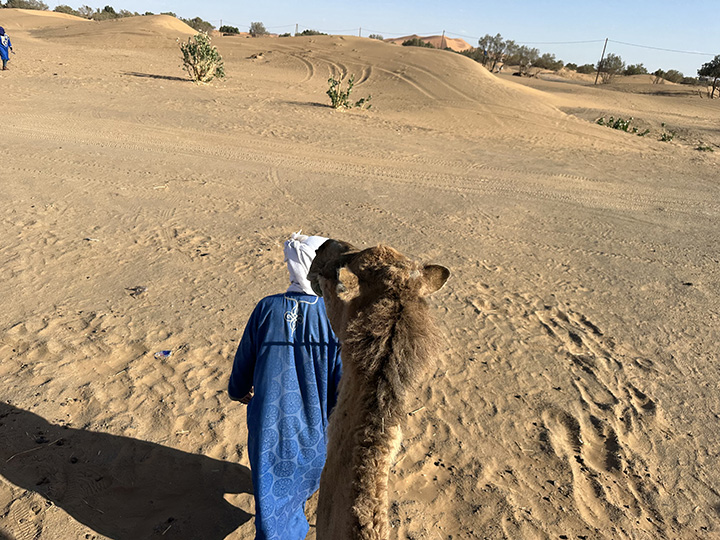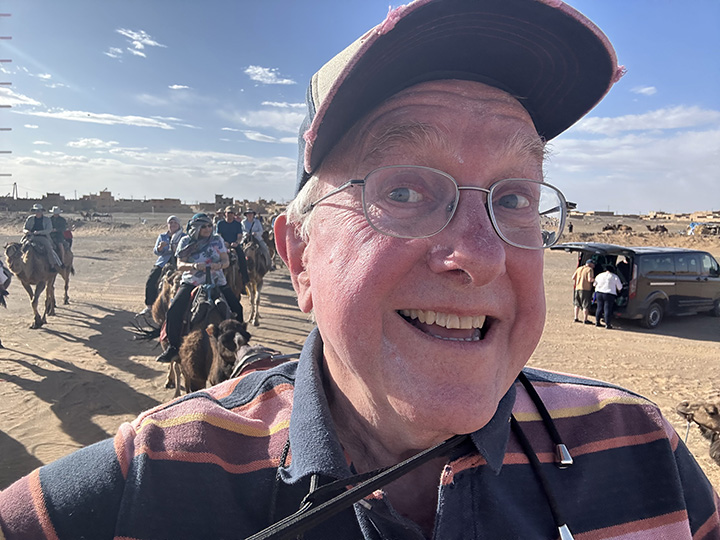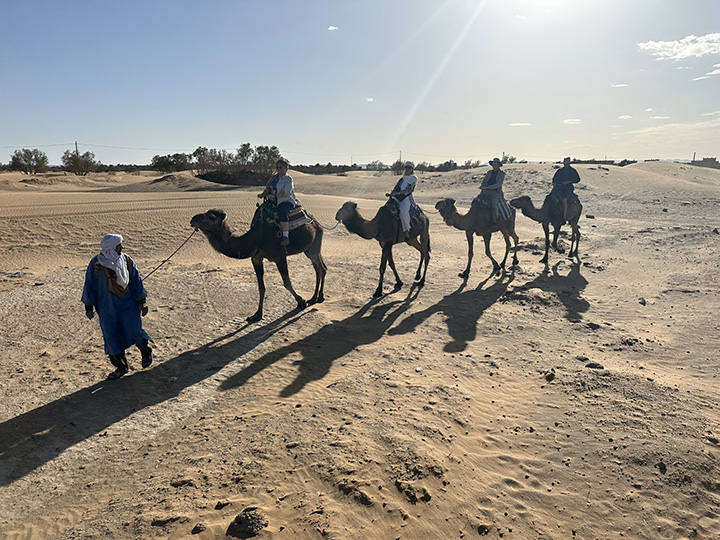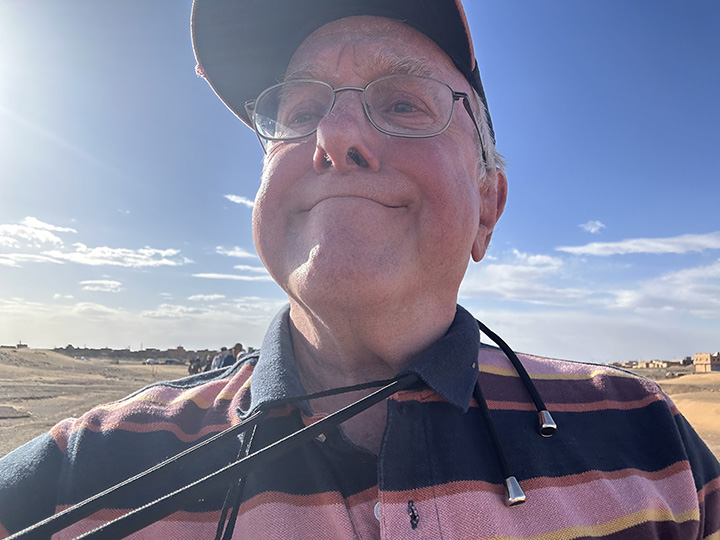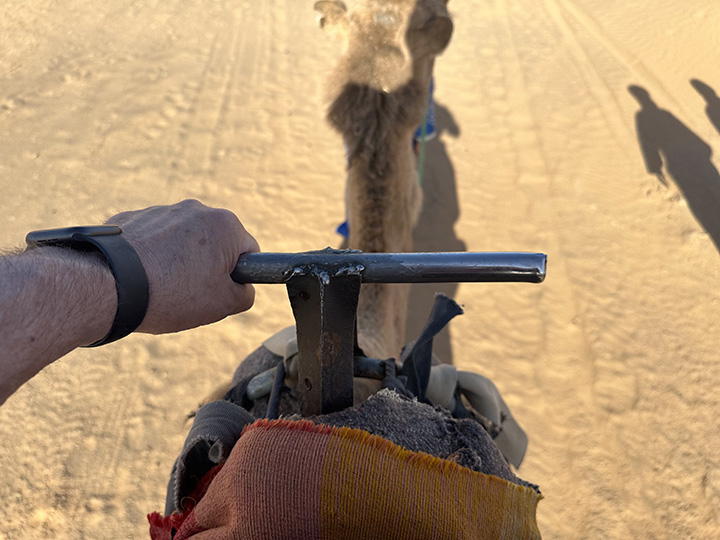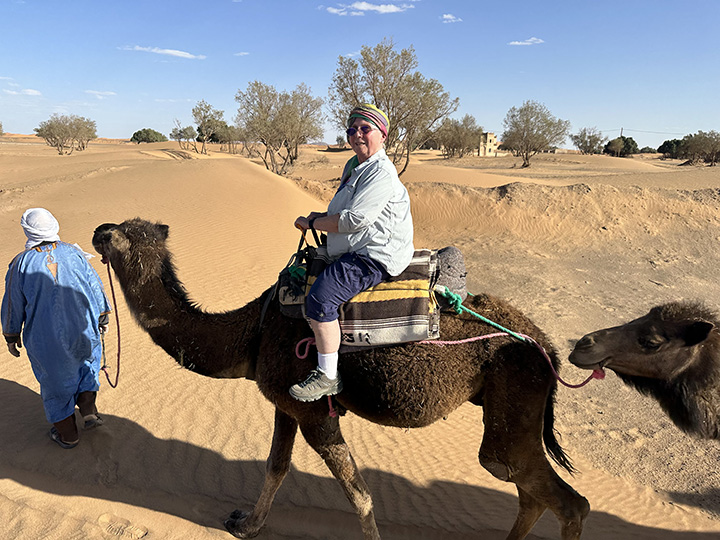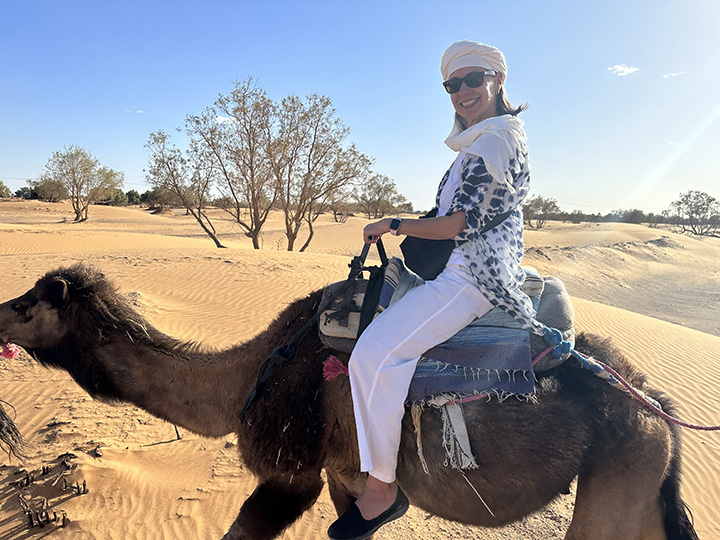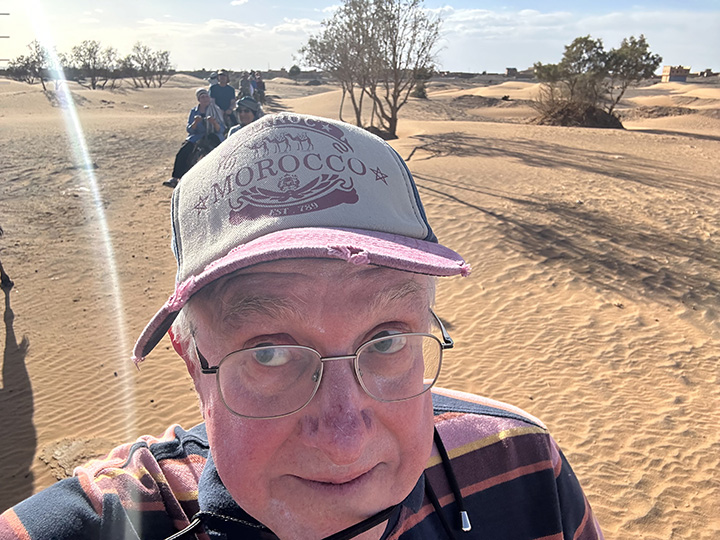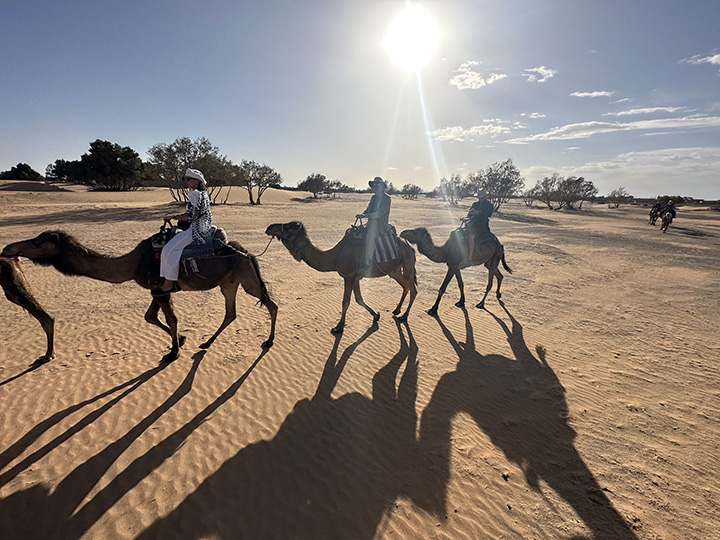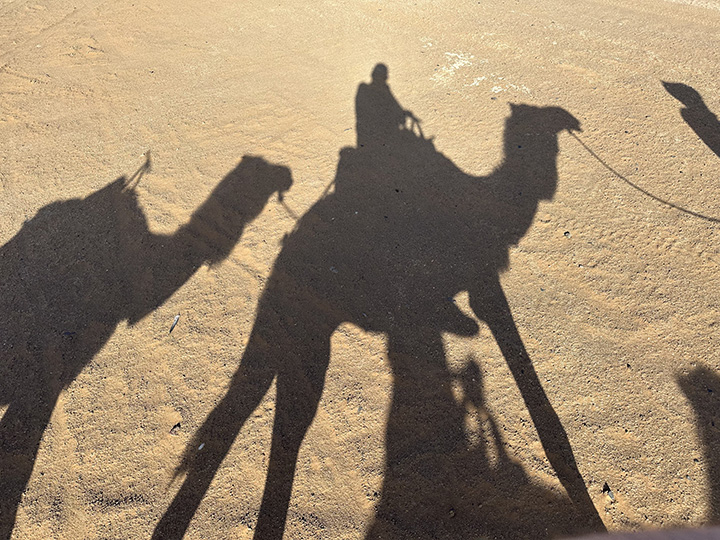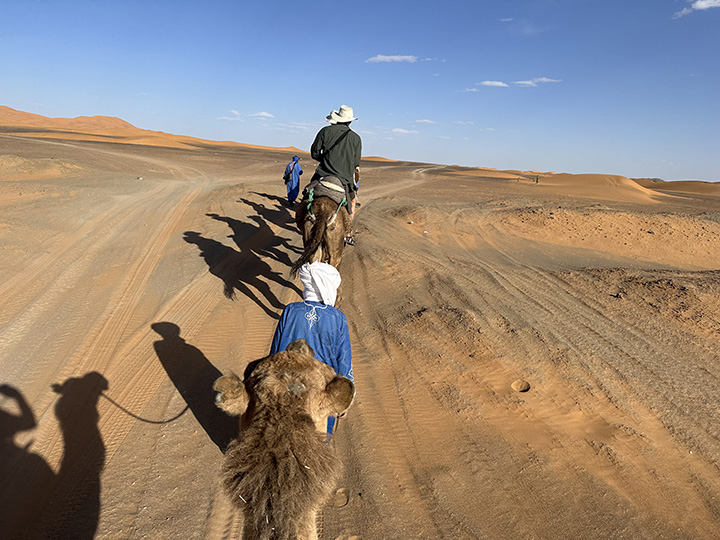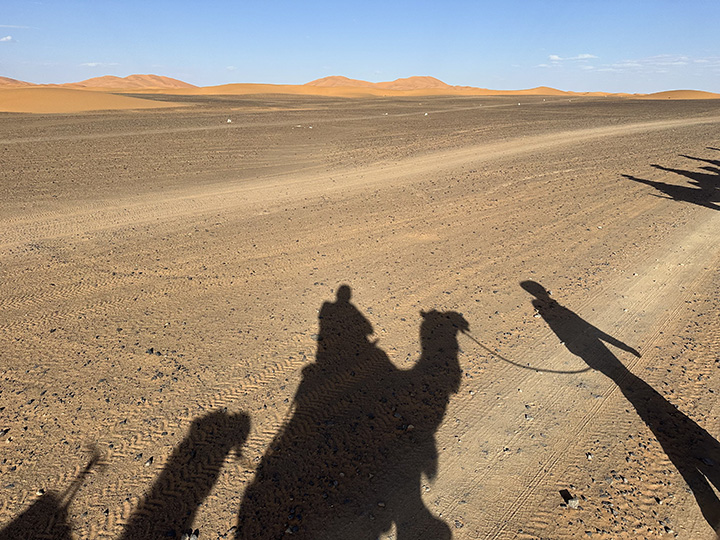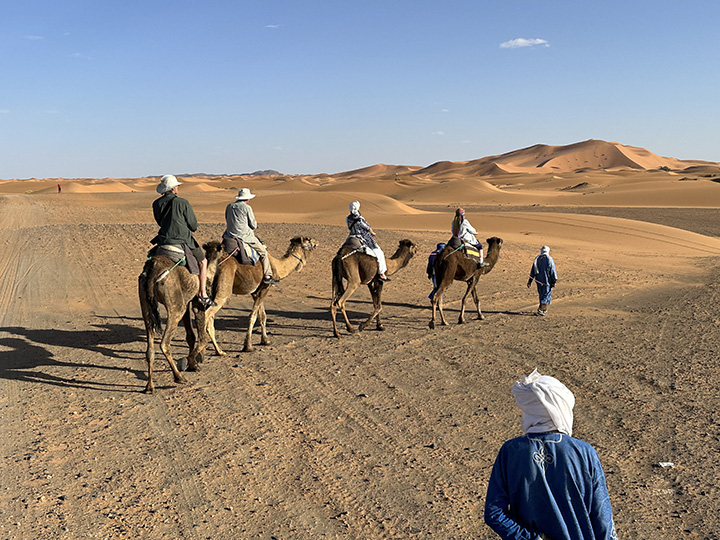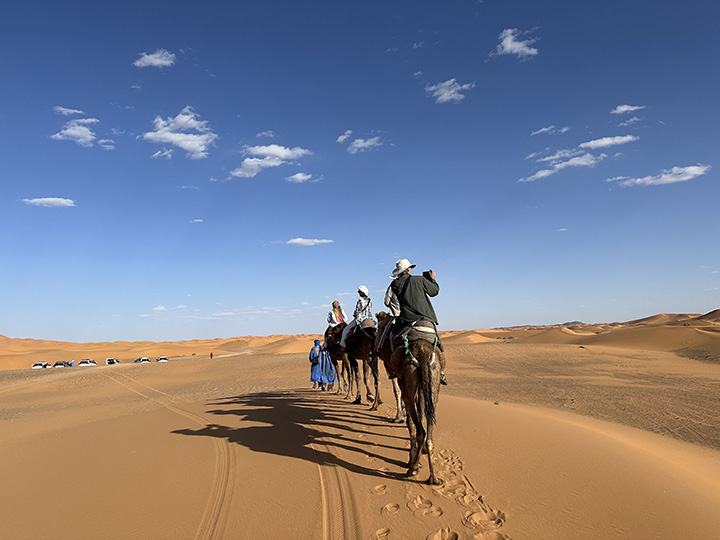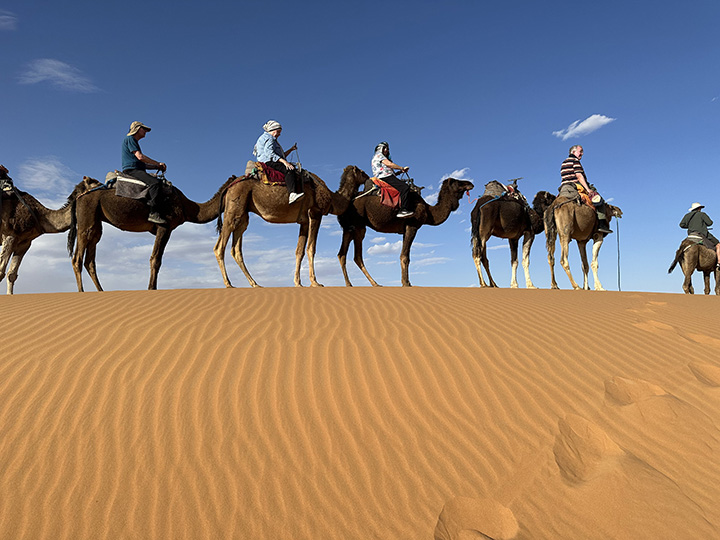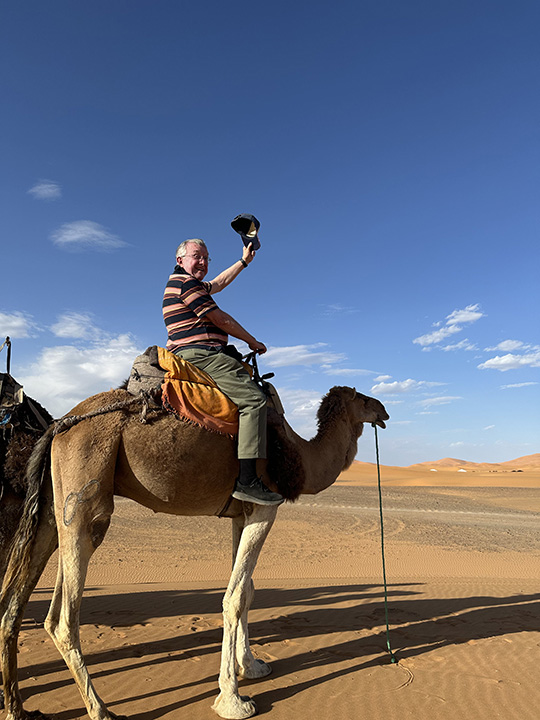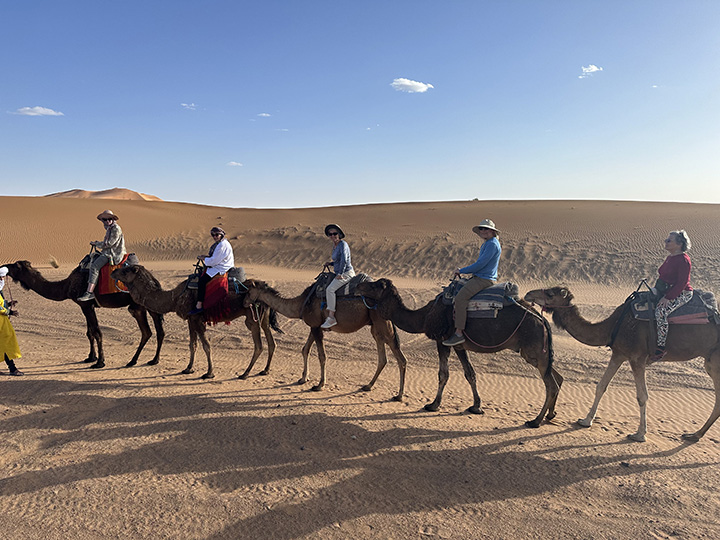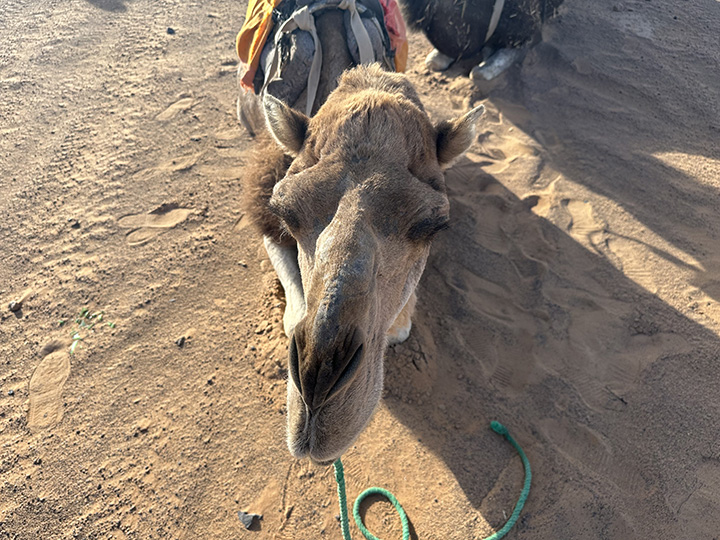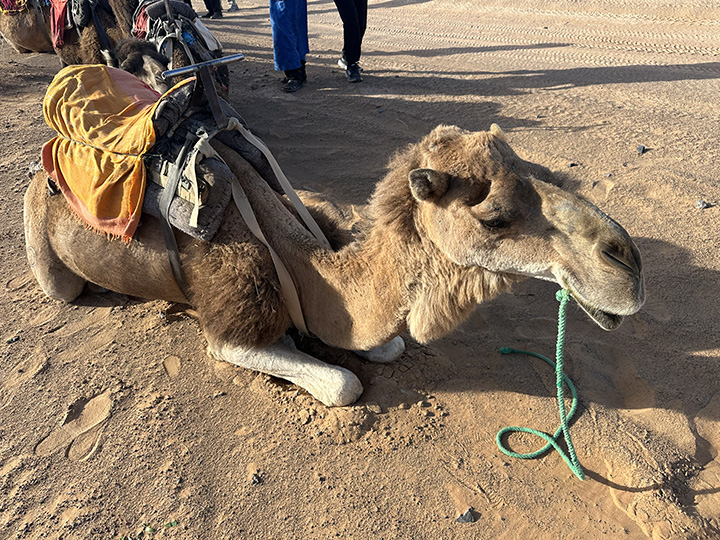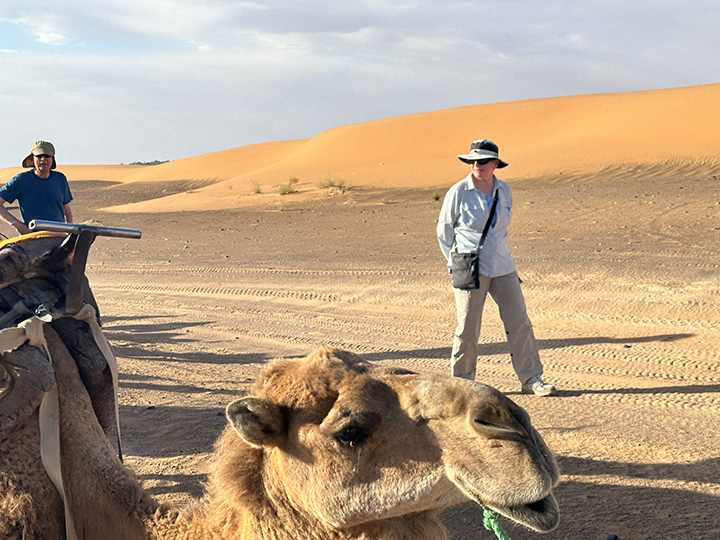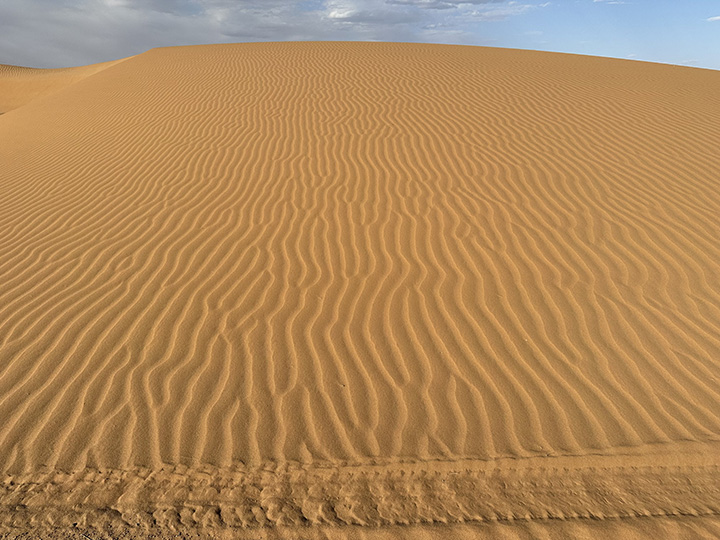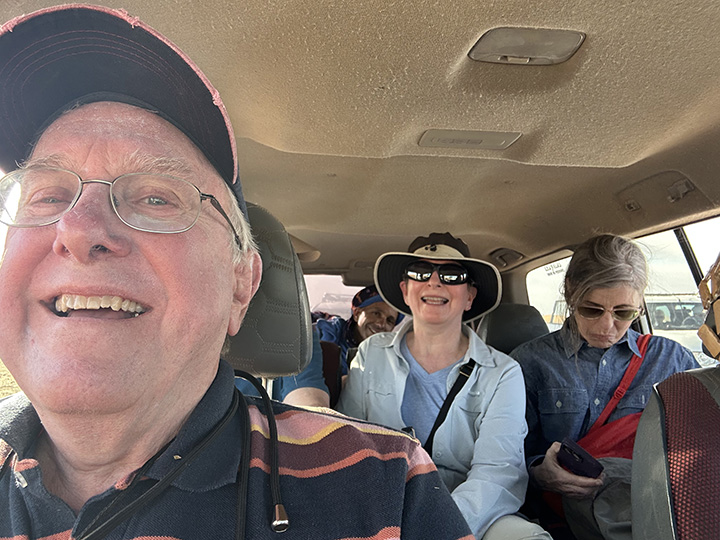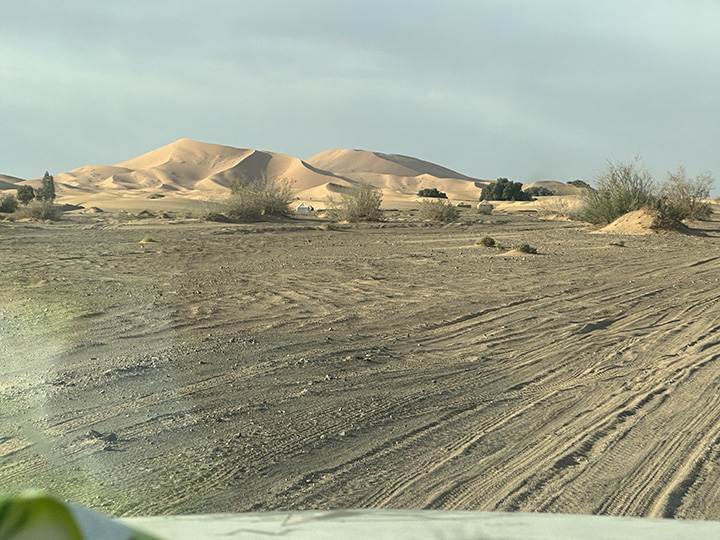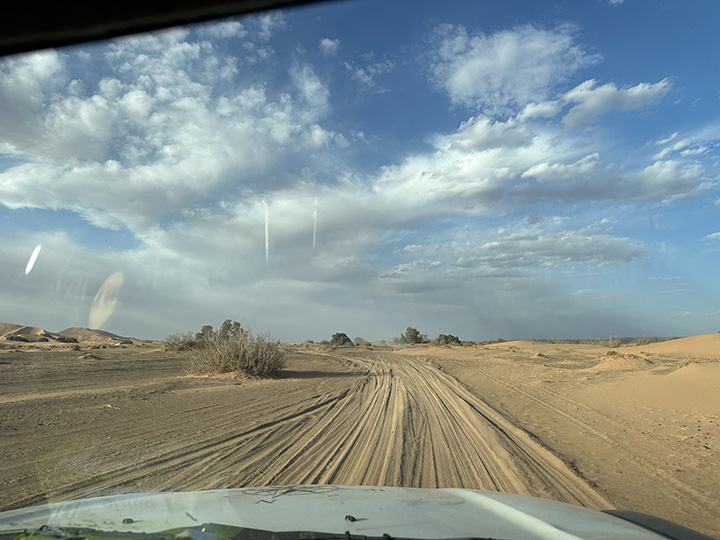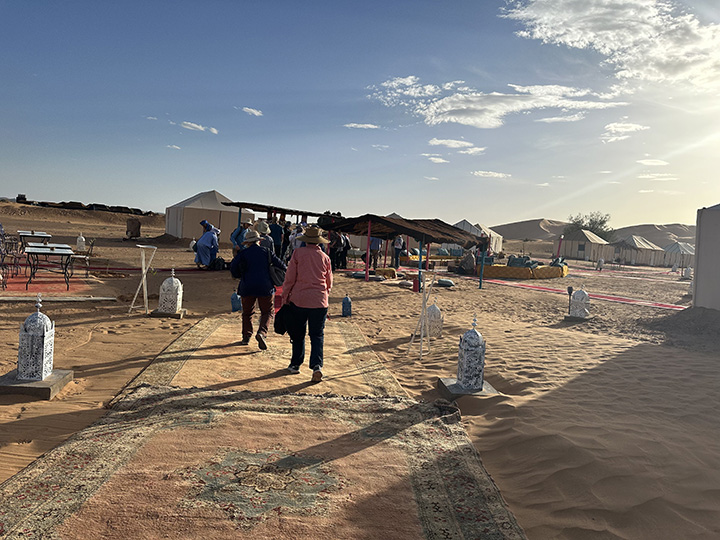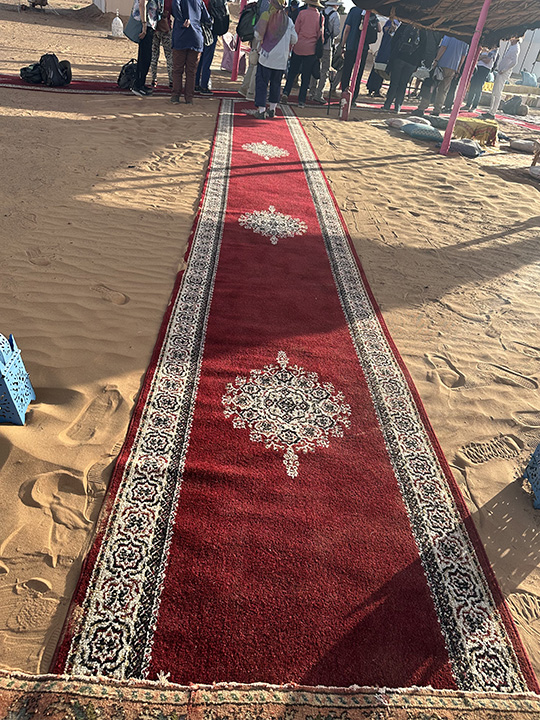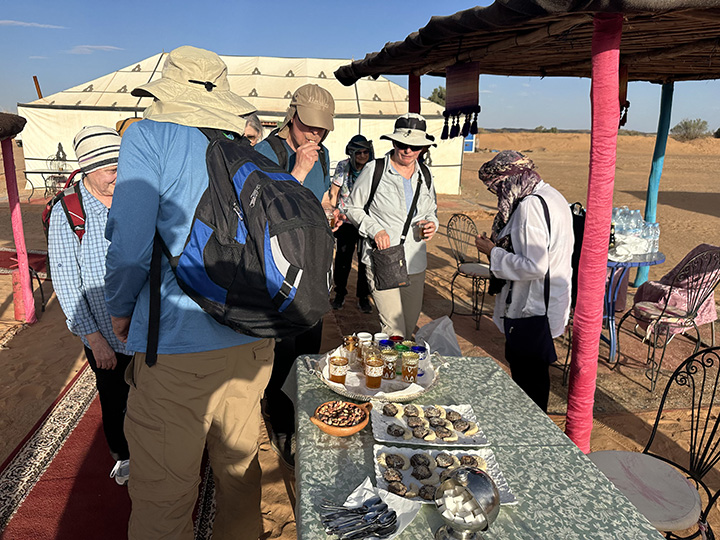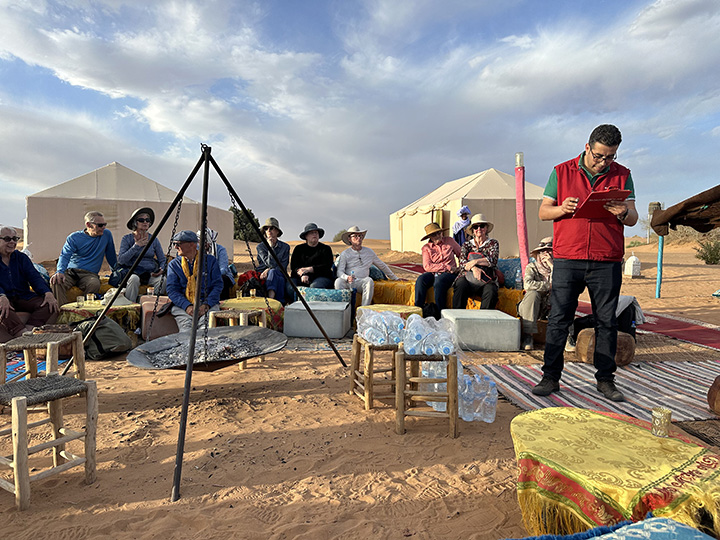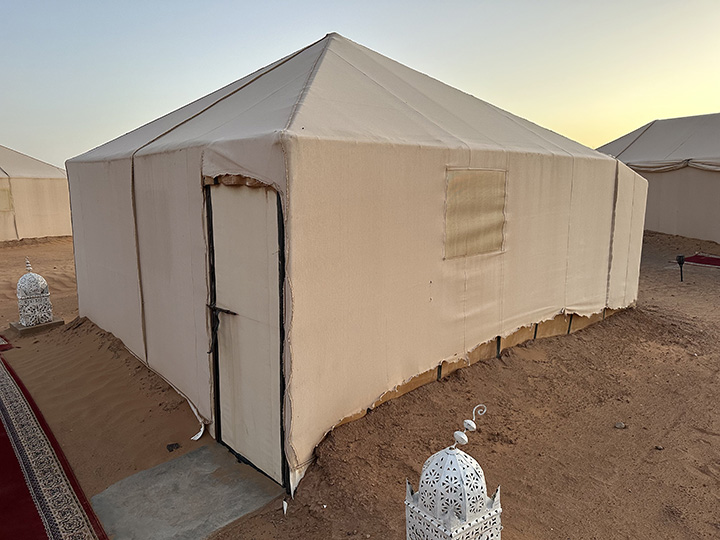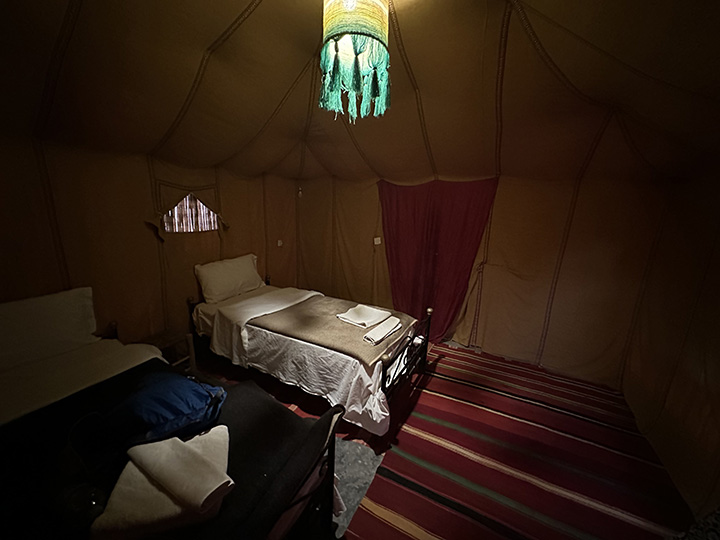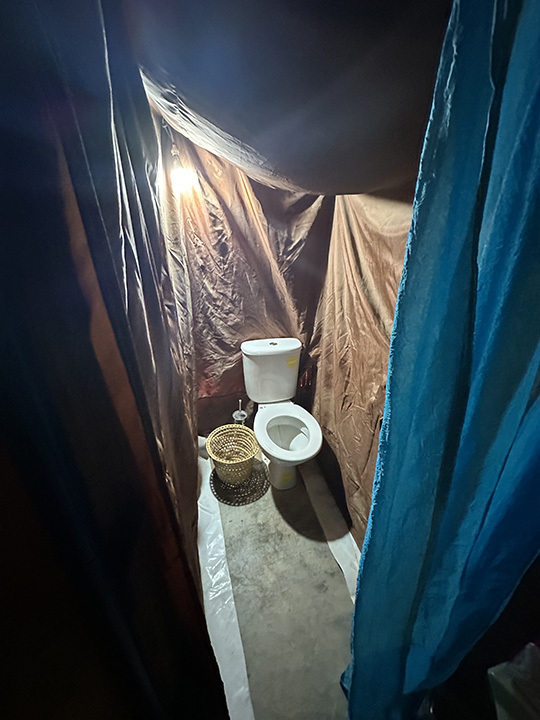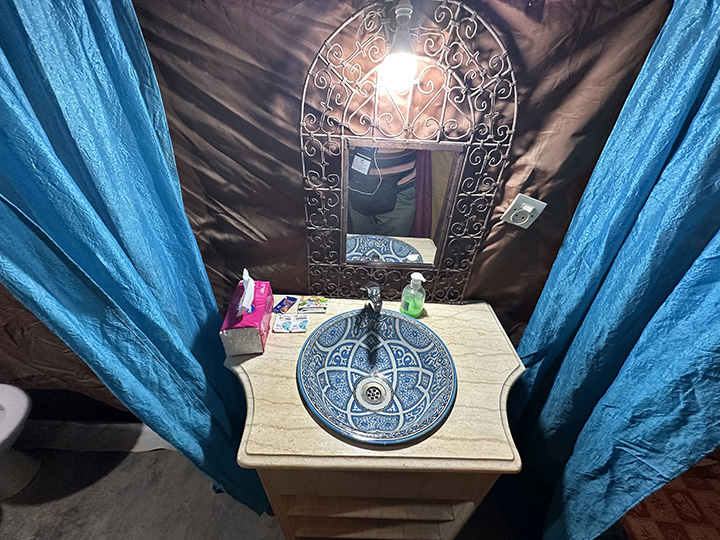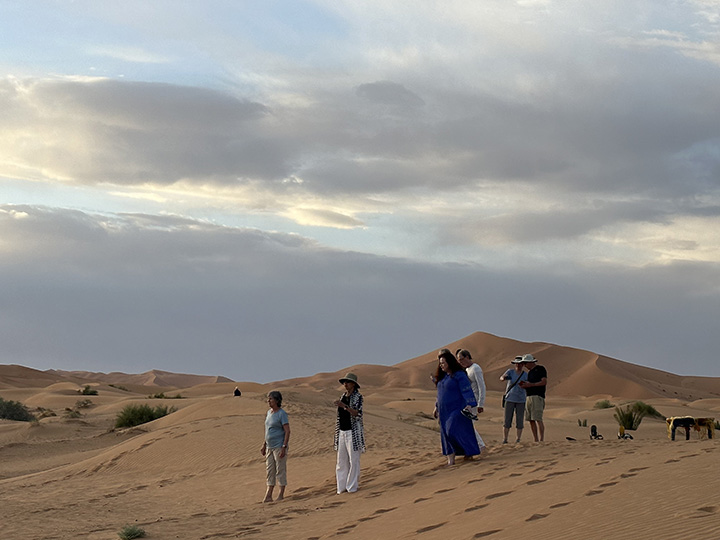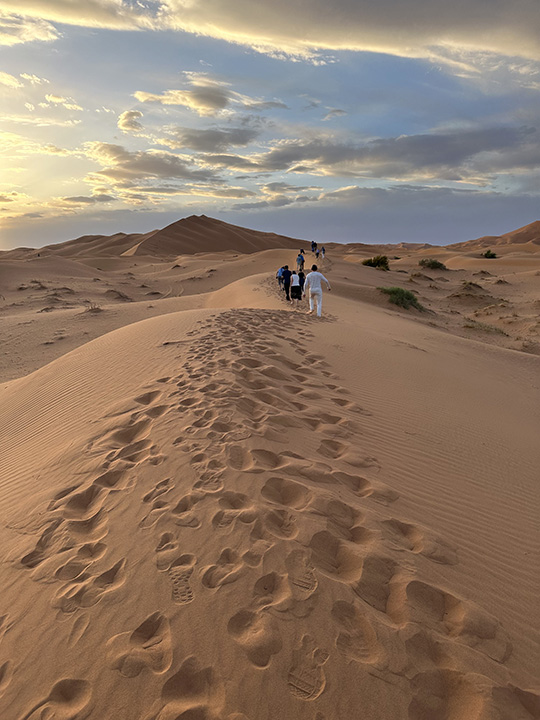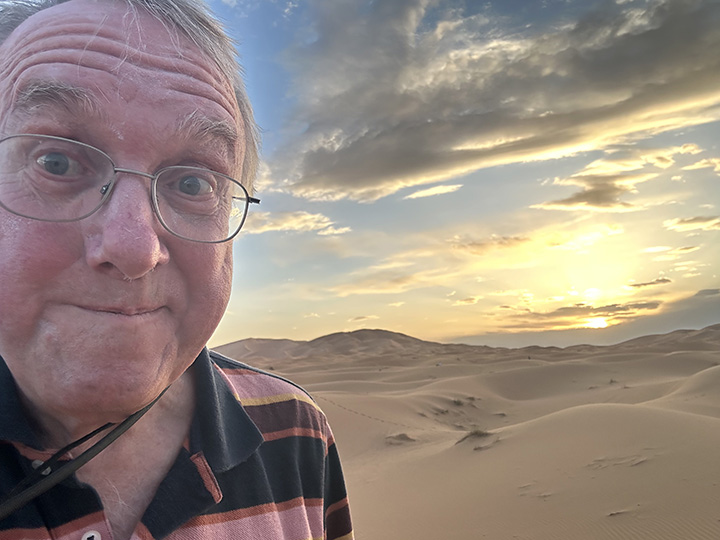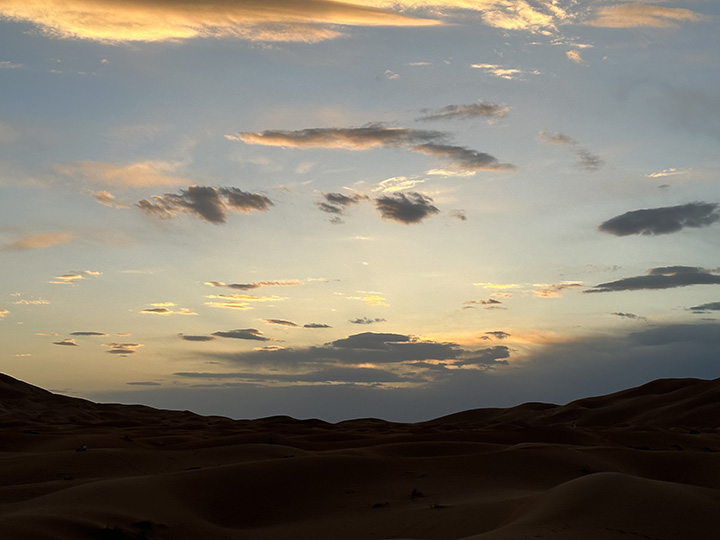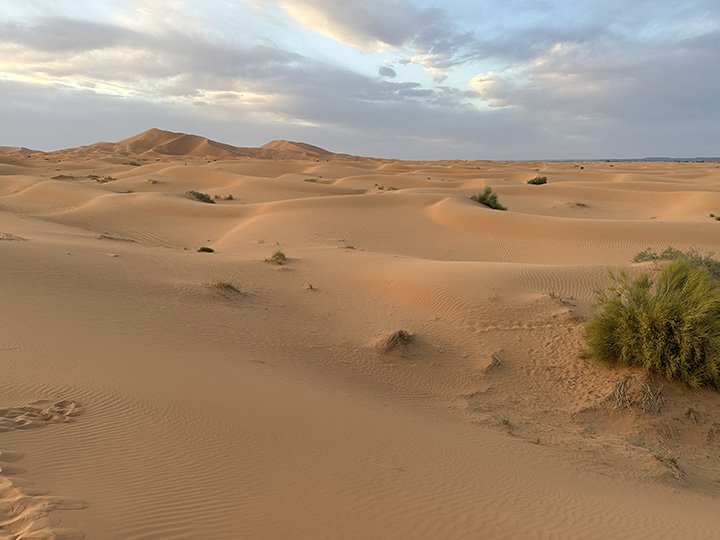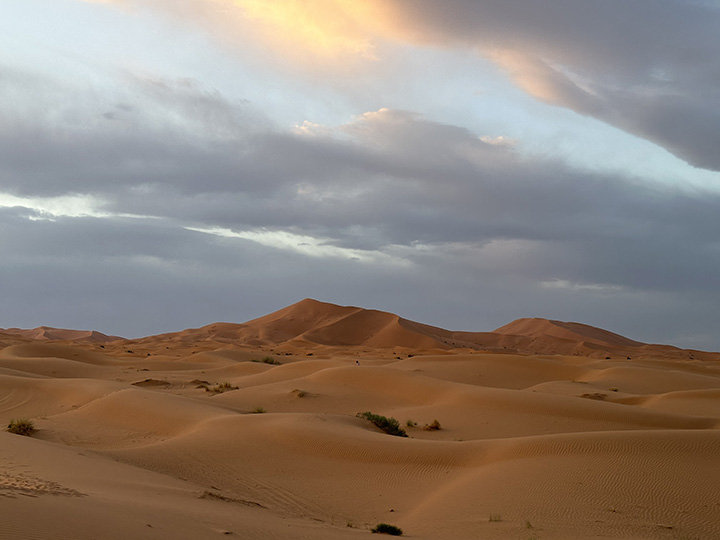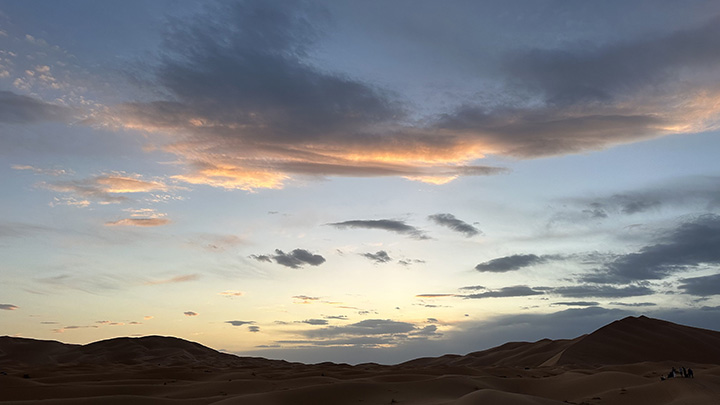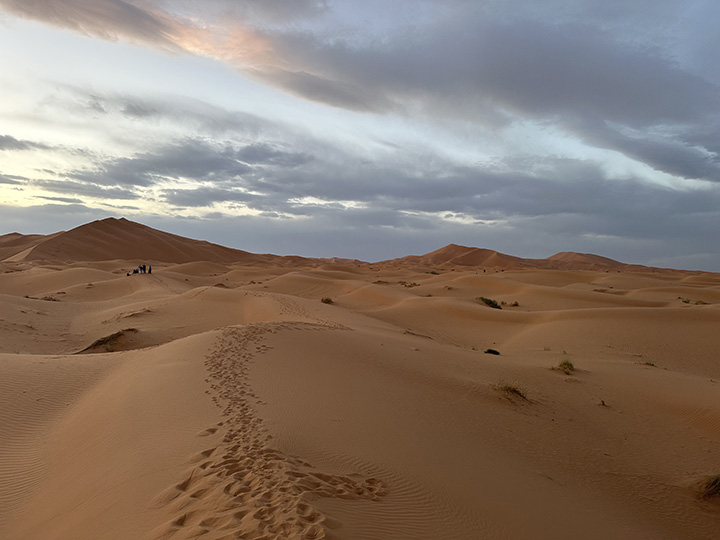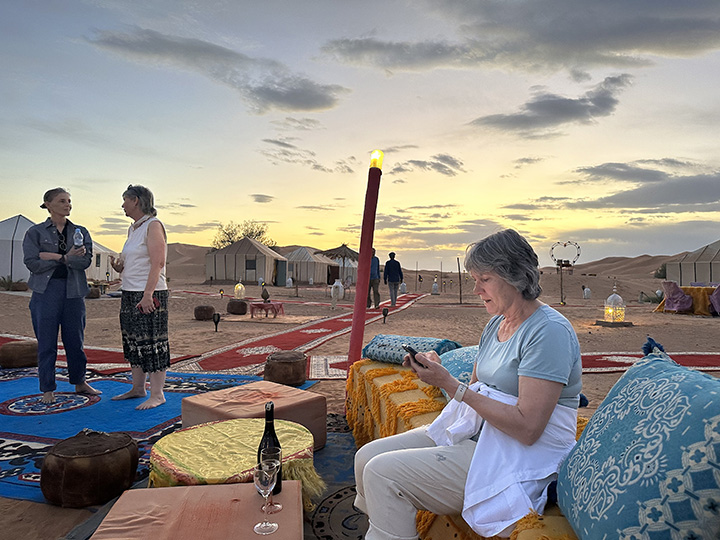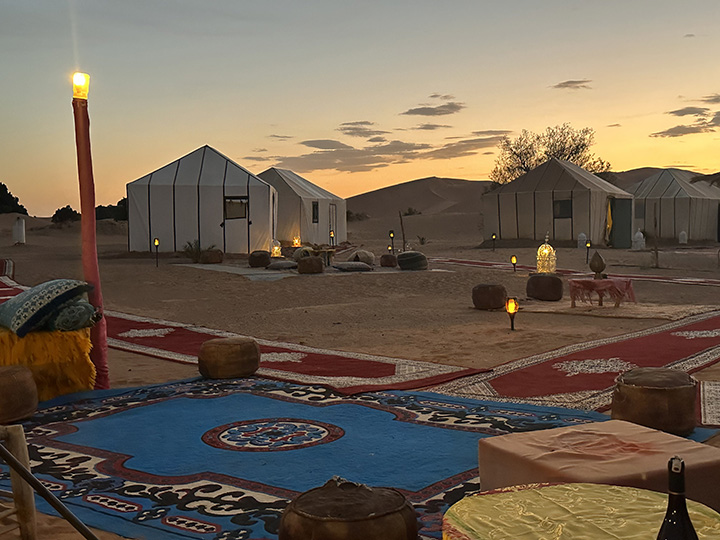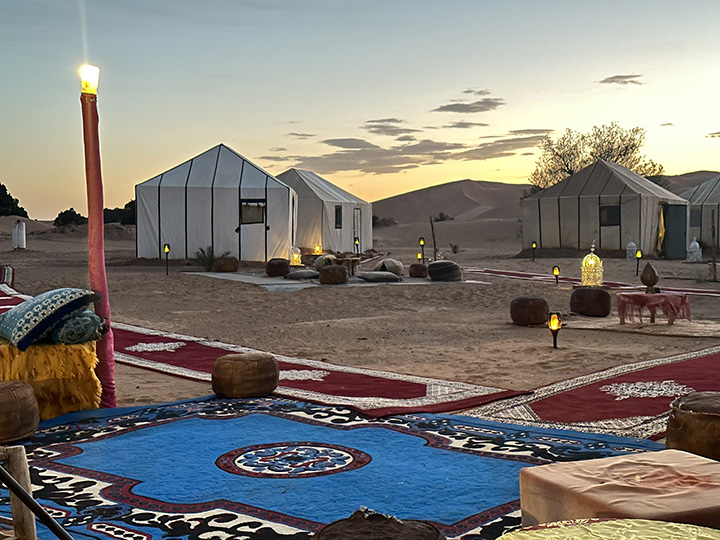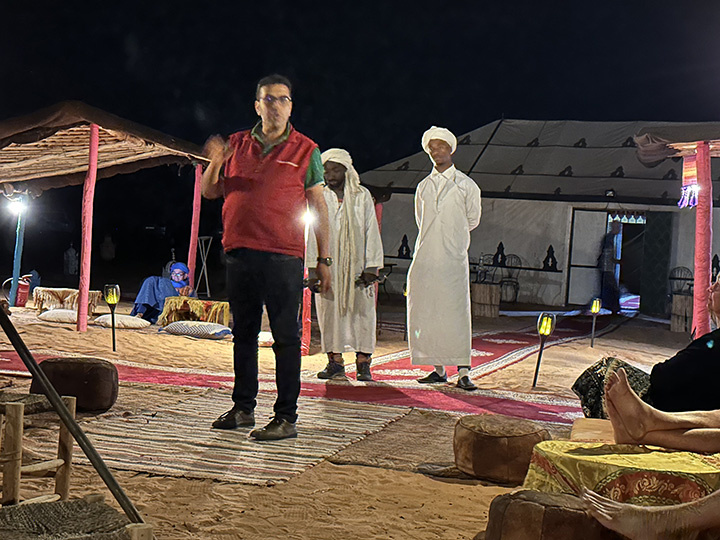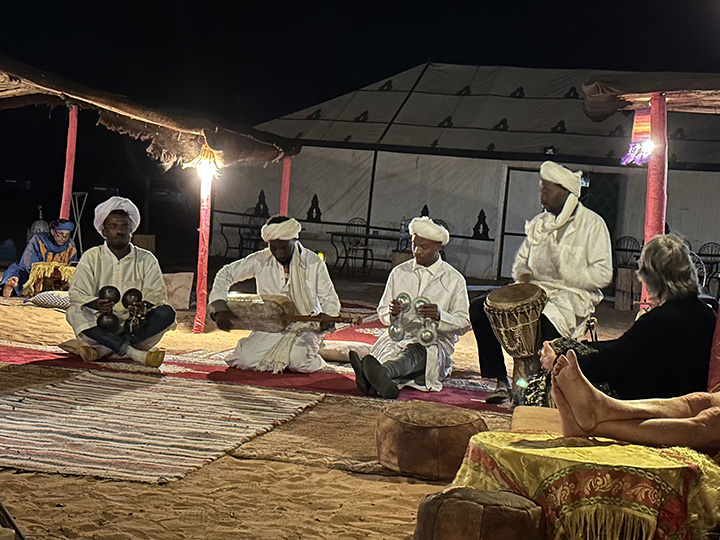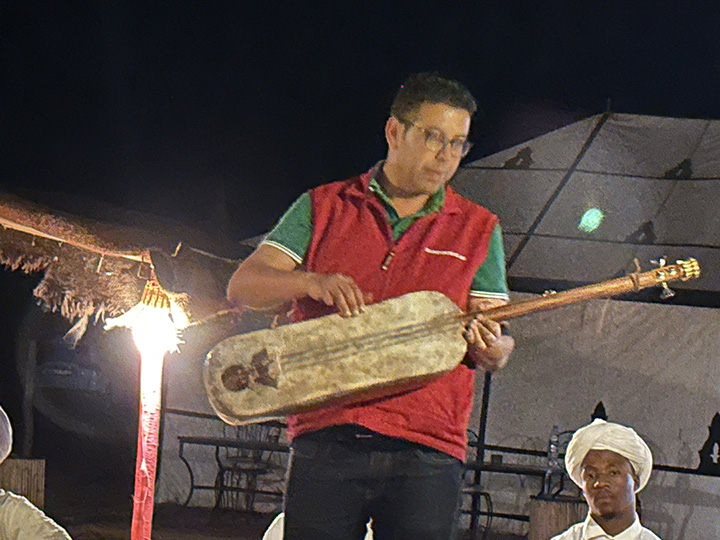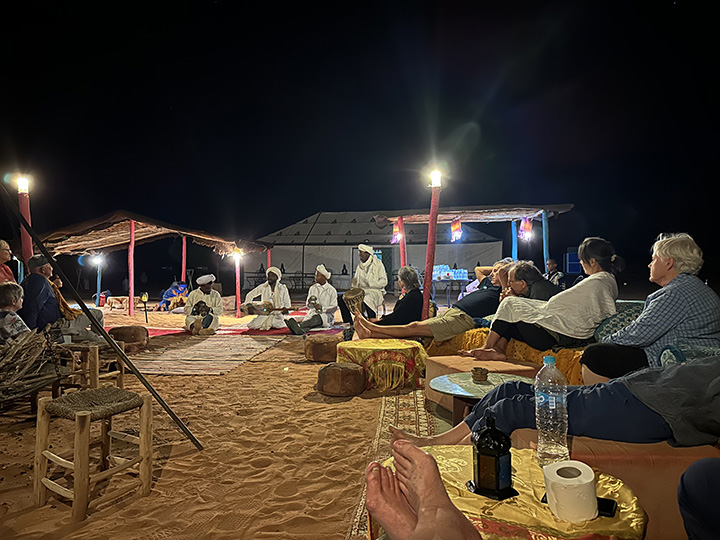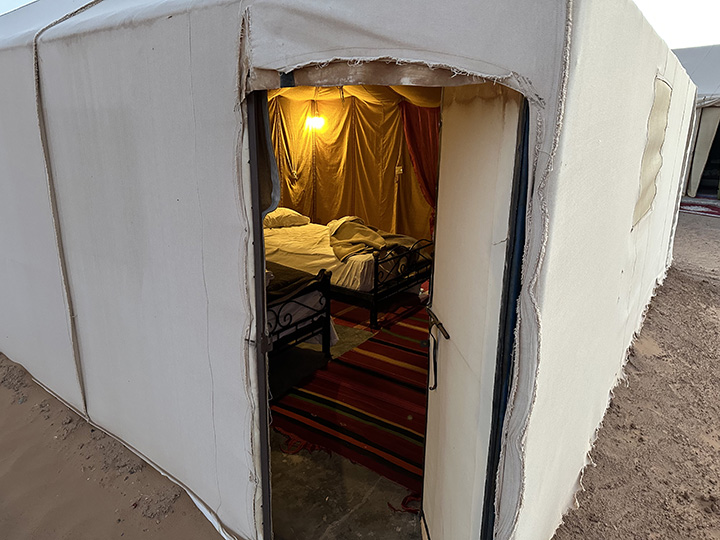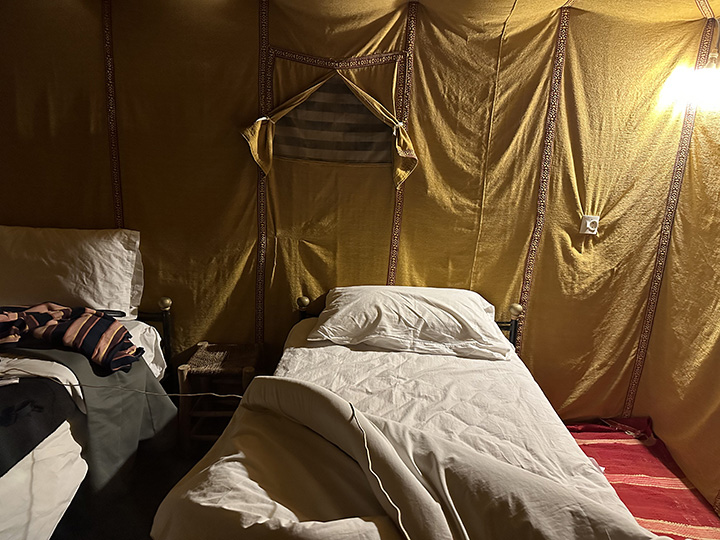|
Today was the kind of day that makes Road Scholar tours worth the price. It was a day full of adventures and introductions to a way of life that I know very little about, culminating in sunset over the Sahara and sleeping the night away in “luxurious” tent accommodations.
The man you see there has only the slightest inkling of how much fun he is going to have today.
But the first stop is a tourist trap that sells rocks. The internet sez: Morabit Marbre is a fossil factory and rock shop in Erfoud, Morocco. The town of Erfoud is located in the Ziz Oasis, near the Erg Chebbi Desert. It's considered the best place to find fossils in Morocco. Morabit Marbre is also known as Morabit Fossils. Some say it's a good place to experience the process of finding and extracting fossils. Others say it's a fossil "museum" or a fossil factory. Morocco has an abundance of fossils, perhaps more than any other country. This is due to the Sahara Desert and the ocean that once thrived there.
Road Scholar is usually pretty good about choosing tourists traps wisely. They figure if their tourists want to spend money on junk, they'll try to stop only for the finest junk in the land.
At this place the junk is dug from quarries where the rocks have formed over the past 360 million years or so from an ancient seabed. There are the remains of critters in these rocks.
The Road Scholars learn all about it.
They read the posters.
They admire the quarried slabs covered in critters.
They listen to the nice rock salesman.
They learn about the stromatolites we saw at the front door of the Meteorite Hotel yesterday.
Just look at all the pointy fossils.
You know, you can decorate your house with this stuff if you like. This stuff would look great hanging on a wall if you have a strong enough wall.
Maybe in your den.
Or your bathroom. How about a new washbasin?
I've got it! You need a new potty.
What a treat it would be to do your business on critters that died 360 million years ago.
Or maybe you need some of these whatever-they-ares.
The Road Scholars are looking awfully tempted.
This guy is ready to make a deal. But Bill declined to take advantage of this wonderful opportunity and departed the fossil factory with not one single rock.
While riding on the bus Nabil let us sample some dates he had purchased. These were the finest dates I have ever put in my mouth. I decided to figure out a way to bring some home. They taste only vaguely like the dried up things you can get at Miss Cordelia’s.
Somebody tried planting palm trees out here in the desert.
Apparently it didn't go well.
Over here they had better luck.
The town of Rissani doesn’t have a Medina but it does have a fancy gate.
The Road Scholars admire the gate.
Here's our local guide for Rissani. He would be showing us some pretty interesting stuff, it turned out.
First stop is Ksar El Fida. Ksar is the North African term for "fortified village.” The term generally refers to a Berber fortified village. A lot of it is made from adobe and it’s not in great shape.
I should dress so good.
It may not be a Medina, but it does have narrow streets.
We are learning all about the architecture.
How the walls are made of adobe.
And how some of it has not been maintained very well.
There's a school here.
We were invited to visit a kindergarten class.
Apparently the concept of kindergarten is new around here and the school system is having to figure out how to deal with first graders who arrive already knowing how to read.
Today they are learning how to write the letter E in Latin script.
And they are charming the socks off the Road Scholars.
Another sweetie.
I believe he is assessing the Road Scholars. I hope we pass inspection.
Who are these people interrupting our class?
The teacher was gracious.
Nabil explained that the kids love to sing the Moroccan National Anthem because it gives them an opportunity to scream at school.
Our local guy taught us how to make Moroccan tea.
Serving tea in Morocco is a major social ceremony.
Now we will visit the souk, or open air market of Rissani.
They sell fresh vegetables here.
And spices.
It's a busy place.
There is constant activity.
Around here, the old ways of getting around are still the best.
The locals tended to ignore us. Still, I got the impression they're not really fond of tourists.
It's a donkey parking lot.
Not much shade here.
Lunchtime!
The food is good but it's all starting to look the same.
Tim and Nancy are getting the tagine treatment.
Surprise!
Well, maybe a small surprise.
This place has a pool but we have no time for it.
Back on the road just in time to spot some dust devils.
Don’t say “Sahara desert.” That is redundant. Sahara simply means desert.
Our guide for the day has a new adventure up his blue robe's sleeve.
Ever wondered what an actual really and truly desert oasis looks like? Let’s go visit one.
It’s right over there and it is called Tafilalt. It is the largest oasis in Morocco. It comprises the fortified villages of Erfoud, Arab Sebbah du Ziz, Rissani, Seffalat, Aoufous, and Jorf, together with palm groves stretching 30 miles along the Wadi Ziz. Tafilalt is noted for its dates, most of which it exports.
It sports a fancy sign.
And just like in the stories we have read, there is lush vegetation right in the middle of desolation.
Suddenly in the oasis, the air is cool and pleasant.
Date palms are dioecious, which means they have both male and female trees. The sex of the plant cannot be known until it reaches its reproductive stage, which takes 5–9 years to first flowering. Female date palms are conventionally distinguished from the male trees only when they begin to produce fruit around the age of five. It takes about five to eight years for female seedlings to bear fruits.
Our guide is explaining all this and the Road Scholars are listening carefully.
Male date palms yield flowers that produce the pollen, and the female date palm yields flowers which will become dates, if they are pollinated. That is pollen from a male date palm. If wind from sand storms doesn’t blow it to the female date palms, this pollen will be taken to them manually. Maybe that’s why they’re called dates? They’ll be harvested in the early fall.
There are almond trees here.
The Road Scholars are dutifully marching single file in order to avoid stepping on any growing thing.
That's an irrigation canal.
And those are some regular non-Road Scholar tourists cooling their feet.
Bill is wondering where all that water is coming from.
There's a spring right out here in the middle of the desert.
And there is a guy dipping fresh oasis water to take home to his family.
Time to leave.
Now that was just one of several fascinating experiences for this day.
This is the staging area for our trip to a camp in the desert where we will spend the night. We are saying goodbye to our guide for the day.
Fancy place.
Let's have a welcome rest on these sofas.
Where we can watch these guys try to sell us some fabrics. I passed.
Let's go find some camels.
And there they are.
They're estimating my weight.
A lovely creature.
He knows what's about to happen. He's done this before.
The Road Scholars mount their ships of the desert for a ride into the Erg Chebni dunes of Merzouga, a small nearby village. An erg is a broad, flat area of desert covered with wind-swept sand with little or no vegetative cover. The word is derived from the Arabic word ʿarq, meaning "dune field".
Maggie, you look like you were born to ride a camel.
Bill is mounted and ready.
The view from up top.
Do you think he's enjoying this?
Fellow travelers.
Uh oh, now he thinks he knows what he's doing. Ahab the Arab, sheik of the burning sands.
He's not even holding on with both hands.
Hi Nancy!
Hi other Nancy!
His butt is getting sore.
Ooooh, shadows.
Great photography, Bill.
It really is a camel caravan.
Bill is trying for dramatic photography and he's almost getting there.
It's a good thing we have guides or we'd surely become lost in the sands.
Don't we look like naturals out here?
What a caravan we make! Don didn't want to do this. Maybe that empty saddle is his?
I wouldn't have missed it for the world.
I think this ride is almost over.
That's the camel rode.
I named him Clyde. That's what he looked like when I brought him to a screeching halt at the rear of Fatima's tent.
A final inspection.
Ooooh...sand ripples. Sahara sand isn't like regular beach sand; it's almost powdery.
Now lets ride through the dunes in an SUV.
Others have come before.
Our Land Rover didn't fly over the dunes like some of the others did, but I suppose Clyde the Camel has given me enough thrills for one day.
I think the camp is up there somewhere.
It certainly is.
And they have rolled out the red carpet for us.
Ah...tea and cookies after an eventful day.
Nabil is taking roll. He's hoping nobody is still out riding a camel.
That's my tent for the evening.
Well, they said it would be luxurious!
And so it is, with indoor plumbing and everything.
Even a fancy sink.
Everybody wants to watch the sun go down over the dunes.
Lives of
great men all remind us It's been a pretty sublime day for me.
As I'm typing this it's been nearly three months since this video was taken and no matter how many times I clean them, those shoes are still shedding sand.
Turns out the sun really does set out here.
And it does it in style.
It's pretty this way.
And it's pretty that way.
It's pretty up here.
And it's a long hike through the sand back to the camp.
I got reception on my cell phone up in the dunes, but not down here.
We were cut off from civilization, and that was pretty nice.
This has been one of those days you never forget.
And now we'll have some entertainment.
The Gnawa of Khamlia are a group of musicians from the village of Khamlia, Morocco. The Gnawa are an ethnic group of descendants of Sub-Saharan slaves who were brought to Morocco beginning in the 11th century. The Gnawa are known for their music, which originated in Black Africa. The music incorporates references to the singers' origins and enslavement, as well as displacement and misery. The Gnawa are known throughout Morocco. Gnawa bands come mainly from the cities of Marrakech and Essaouira, which are historically known for slave trade with trans-Saharan countries. Essaouira is well-known for being the "spiritual capital" of Gnawa music.
Gnawa or Gnaoua refers to both a style of music that fuses classical Islamic Sufism with Pre-Islamic traditions, and an ethnic group/religious order partly descended from former slaves. Characterized by deep low toned sinter melodies, call and response singing, hand clapping and cymbals, Gnawa music strives to evoke a deep hypnotic trance, often aimed at frightening off evil spirits. I found the performance wonderfully entertaining.
Nabil explained how some of the instruments work. Again, note the round neck with no frets.
What a marvelous ending for a fantastic day.
Now it's time for bed.
Goodnight, Sahara.
|

